
















42
Grey Gardens
Rich with provenance and personality, this East Hampton property lands in the capable hands of style maven
Liz Lange for a thoughtful, sophisticated makeover.
Glamour in the Garden
Wearable art made from precious metals and stones reflects the diverse colors and compositions of some of the world’s great gardens.
64
Beauty in Bloom
Interior designer
Lindsey Herod let floral textiles lead the way for the design scheme of her clients’ Houston home.
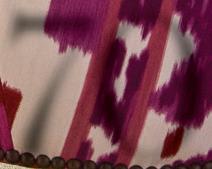
70
The Pull of Palm Beach
Designers of every genre are migrating south to this burgeoning mecca of talent and style.
ON THE COVER:
This cheerful flower room—part of a glamorous redo of Grey Gardens, the legendary East Hampton summer home to many intriguing personalities in the past—signals a bright future. Photographed by Michael Mundy

“Just living isn’t enough,” said the butter y. “One must also have sunshine, freedom, and a little ower.”
–HANS CHRISTIAN ANDERSEN
SCENE
16
We’ve got our eyes on... New book releases to keep you inspired with the latest in decorating, floral design, and entertaining.
IN BLOOM 19
Floral Design
Tattie Isles and her team at Tattie Rose Studio create immersive experiences with an abundance of foliage, florals, and all manner of foraged materials.

25
Garden

At the Delaware Botanic Gardens, a bouquet of committed volunteers combined with superstar designer Piet Oudolf and his vision to transform this creekside former farmland.
30
Decorate: Flowers
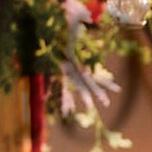
Floral designer Kelly Marie Thompson of Chicago’s Fleur Inc. finds inspiration under the Tuscan sun for her colorful, fragrant, and flavorful arrangements.
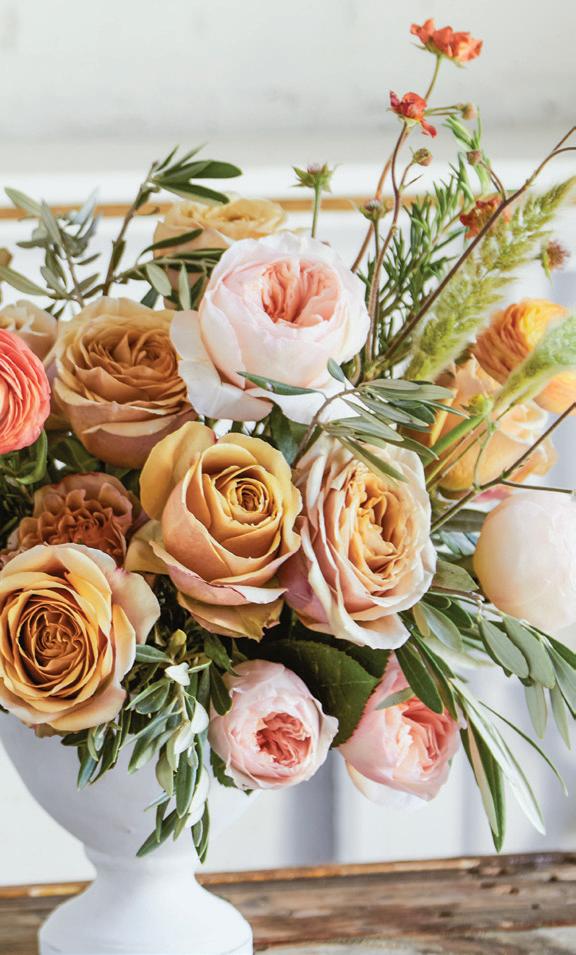
34
Market: Beach Club Vibes
Whether you are lounging on the sand, swimming in the surf, or exploring on a catamaran, these seaside essentials will have you sunning in style.
38
Women in the Garden Best known for serving as empress of France while married to Napoleon Bonaparte, Joséphine also created her own legacy in the gardens of Château de Malmaison.

30
IN EVERY ISSUE
Watering Can 10

What’s Online? 14
Sources 84
At the Table 88
16
19

AS I TYPE THIS LETTER, I’m hearing the soft stew of the Delta Air Lines Sky Club playlist, periodic flight update announcements, the PSA of the Atlanta mayor urging us to play our part in the fight against human tra cking, and the low hum of human conversation. This is the soundtrack of my travel life. I’m not complaining. I’m cataloguing and rejoicing, for it signals I’m going someplace wonderful or am returning home from someplace wonderful. Both are good.
As it happens, I’ve just had the pleasure of visiting, for the first time, St. Petersburg, Florida, where I attended the glorious Art in Bloom at the Museum of Fine Arts (MFA). But really the whole trip was glorious. The city is sophisticated yet has a small-town feel. There’s a real pride of ownership in its residents—from the chairman of the board of the MFA to the guard at The James (of Raymond James fame) Museum of Western and Wildlife Art, where I lingered so long they had to kindly tell me to leave.
Paired with my recent visit to Dallas and the Harlan Crow Library, which is filled with extraordinary treasures of the art world past and present, as well as my trip to Wilmington, Delaware, to tour Winterthur Museum, Garden and Library (Henry Francis du Pont’s house of American decorative art and antiques), I find my heart full of wonder at and gratitude for the
generosity of private collectors. They give new meaning to the term “share the wealth.”



As I recall my visit to the once rescued and recently restored and redecorated Grey Gardens, I’m struck with the same sense of appreciation. Liz Lange, like the great aforementioned collectors, was determined to preserve, enhance, and encourage others to enjoy a piece of history—in her case, an iconic American house and garden. She references its museum-like quality as the home of the legendary Beales, as well as her desire to preserve what she deems essential while maintaining her personality and privacy. She’s succeeded, splendidly.

See what you think.
Wishing all our FLOWER friends a summer replete with beauty and generosity.
Love and
 Margot Shaw EDITOR-IN-CHIEF
Margot Shaw EDITOR-IN-CHIEF
“How will we know it’s us without our past?”
John Steinbeck , The Grapes of Wrath

VOLUME 17, ISSUE 3

Margot Shaw FOUNDER/EDITOR-IN-CHIEF
Julie Gillis MANAGING EDITOR
Nicole Gerrity Haas ART DIRECTOR
DIGITAL
Jason Burnett DIGITAL GENERAL MANAGER
Carrie Orteza ASSISTANT EDITOR
EDITOR-AT-LARGE
Karen Carroll
CONTRIBUTING EDITORS

Missie Neville Crawford
Alice Welsh Doyle
James Farmer
Kirk Reed Forrester
Amanda Smith Fowler
Marion Laffey Fox
Elaine Griffin
Tara Guérard
Sallie Lewis
Frances MacDougall
Robert Martin
Tovah Martin
Cathy Still McGowin
Charlotte Moss
Ellen S. Padgett
Matthew Robbins
Margaret Zainey Roux
Frances Schultz
Lydia Somerville
Sybil Sylvester
For editorial inquiries: editorial@flowermag.com
Julie Durkee PUBLISHER
Jennel O’Brien ASSOCIATE PUBLISHER, SALES & MARKETING
Marlee Ledbetter MARKETING COORDINATOR
ADVERTISING SALES
Suzanne Cooper NATIONAL DIRECTOR, HOME FURNISHINGS
Wendy Ellis REGIONAL ACCOUNT MANAGER
Sara D. Taylor REGIONAL ACCOUNT DIRECTOR
For sales inquiries: sales@flowermag.com
BUSINESS OFFICE
Mercy Lloyd CHIEF OPERATING OFFICER
Patrick Toomey ACCOUNTANT
Lisa Mitchell SENIOR MANAGER
CUSTOMER SERVICE
For change of address and subscription inquiries: 877.400.3074 or CustomerService@FlowerMag.info

ADVISORY BOARD
Paula Crockard
Winn Crockard
Gavin Duke
Gay Estes
Katie Baker Lasker
Mary Evelyn McKee
Michael Mundy
Ben Page
Angèle Parlange
Renny Reynolds
Scott Shepherd
Mish Tworkowski
Remco van Vliet
Evie Vare
Louise Wrinkle

Whether you are building from the ground up or giving your home a decorative refresh, the right lighting can make all the difference in every space. Lighting fixtures punctuate a space, and the quality of the lighting can change the mood of a room. We’ve asked designers to—dare we say— illuminate us on lighting, both stylish and practical. Learn about layering lighting for a relaxing bedroom, and get the latest trends and tips for kitchen luminescence. Find our guide to selecting beautiful lampshades and navigating the light bulb aisle to choose the options best suited for each space and fixture. Find the features at flowermag.com/lighting
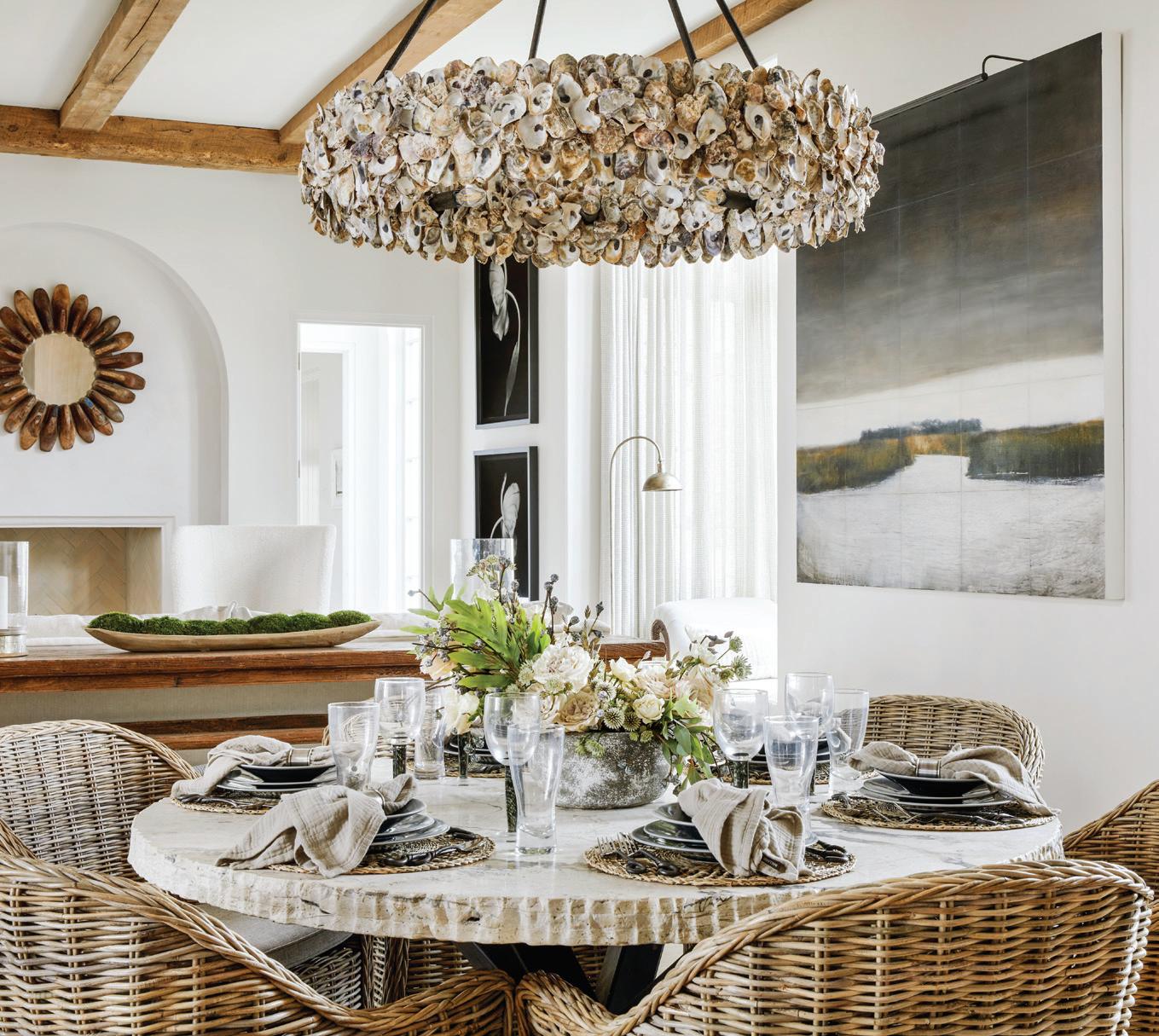
In May and June, we fire up the grill and invite friends over for casual fare, alfresco meals, and relaxed get-togethers. Over the years, we have gathered recipes for spring and summer entertaining from some of our favorite hosts, starting with chef Frank Stitt and his Summer Peach, Fig, and Prosciutto Salad. Each dish serves up the season’s bounty of ingredients in summery salads, soups, entrées, and desserts, plus the perfect chocolate sauce for your homemade ice cream! Add them to your summer party and potluck rotation. Find the recipes and more at flowermag. com/summergatherings
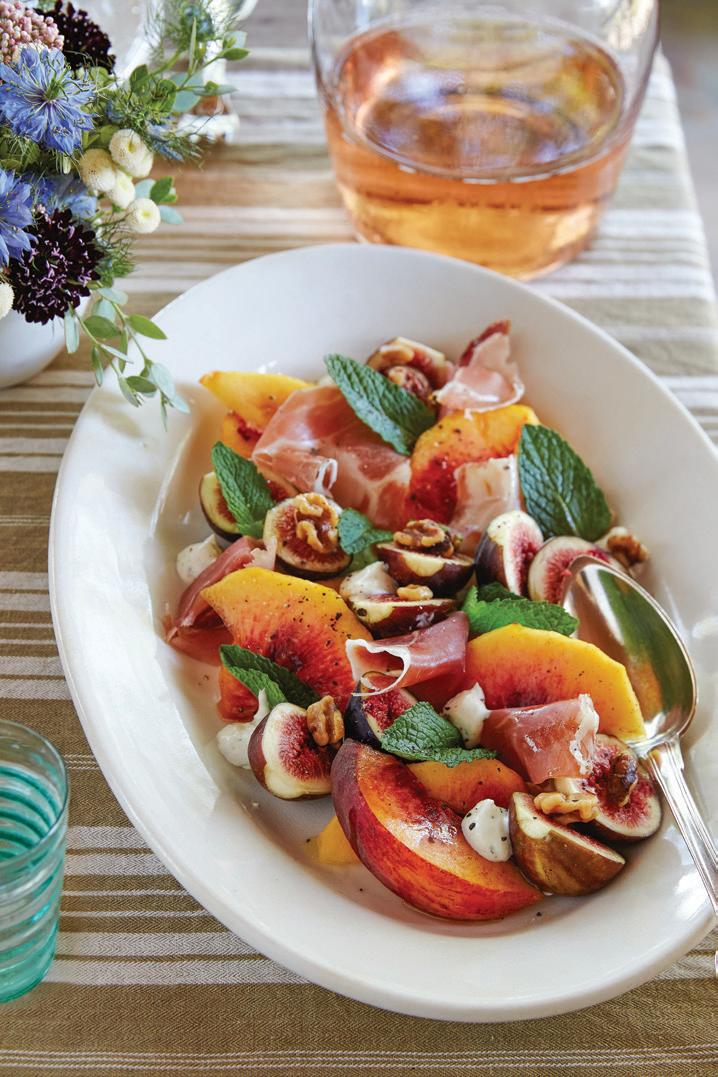
As all eyes turn to London and Westminster Abbey for the coronation of King Charles III on May 6, we’re revisiting beloved English gardens in Yorkshire and Derbyshire, as well as landscapes designed by Capability Brown, the beautiful gardens shaped by Nancy Lancaster, and even the king’s Highgrove Gardens in the Cotswolds countryside. Find them at flowermag.com/englishgardens
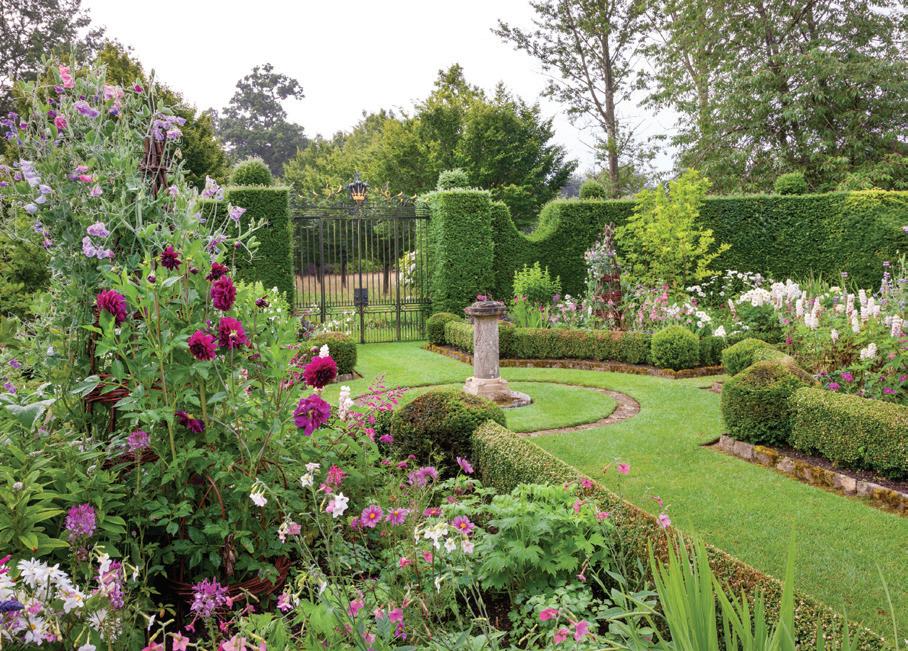

WHAT WE’VE GOT OUR EYES ON ...

OUR ROUNDUP OF NEW RELEASES OFFERS
THE LATEST IN DECORATING, FLORAL DESIGN, AND ENTERTAINING.
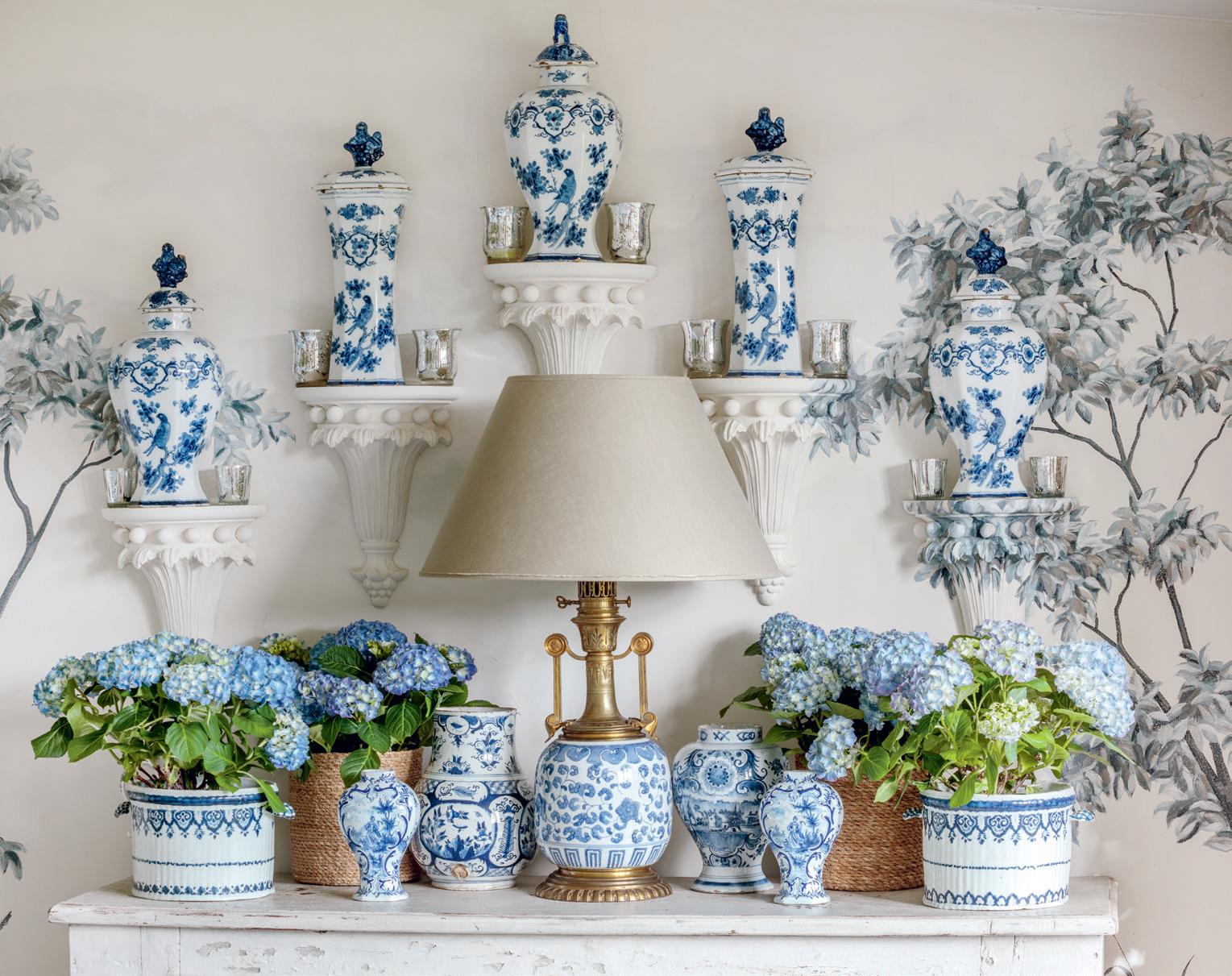 By Julie Gillis
By Julie Gillis
Charm School by Emma Bazilian and Stephanie Diaz (The Monacelli Press, 2023), $55
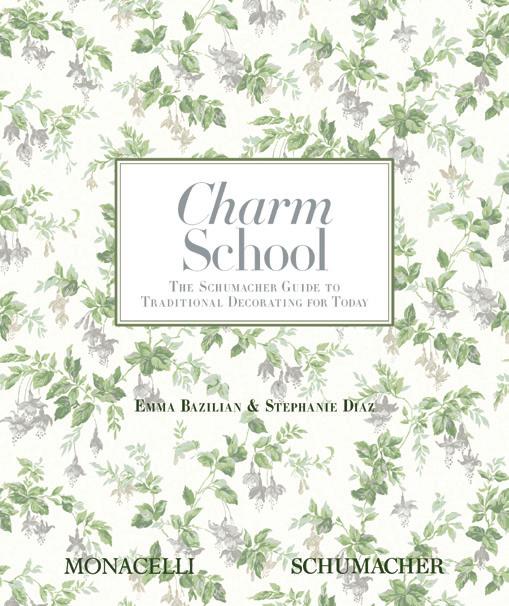
Everyone loves a good comeback story, and there’s one happening right now in the decorating world. Schumacher Books, a division of FSCO Media, has teamed up with Monacelli to explore the old-school techniques that are showing up in fresh ways. Discover how to execute traditional design for the next generation while exploring timeless rooms by talents such as Celerie Kemble, Markham Roberts, and Ashley Whittaker.

French Blooms: Floral Arrangements

Inspired by Paris and Beyond by Sandra Sigman (Rizzoli, 2023), $40 While living in Paris in her twenties,
award-winning floral designer Sandra Sigman discovered that the French view each floral arrangement as a work of art. Here, she shares the design principles she learned and o ers tutorials for creating French-inspired arrangements. Topics include how to choose the right containers, the correct way to care for various owers, and the tools needed for each project. Stunning photographs, many taken in Paris, Provence, and Normandy, add authenticity and inspiration throughout the book.
An Entertaining Life: Designing
Town and Country by Paolo Moschino and Philip Vergeylen (Vendome Press, 2023), $60
After 30 years together, both professionally and personally, design gurus Paolo Moschino

and Philip Vergeylen have created countless projects around the world. In this book, they feature their own houses in London and Sussex, as well as many client projects, such as a Balinese-style home in the Caribbean and a luxurious villa in Sicily. Readers are treated to several chapters focused on the design duo’s collections, home o ce, and formal gardens that they use for entertaining. In addition, the two talents share personal anecdotes, tips about their design philosophy, and delicious recipes from their favorite dinners.
Think Like a Decorator: To Create a Comfortable, Original, and Stylish Home by Leslie Banker (Rizzoli, 2023), $45
Leslie Banker, daughter of legendary designer Pamela Banker, has been surrounded by decorating experts her whole life. Her mother taught her that in order to think like a decorator, you have to focus on developing the story of the space and of those who live in it. Now Leslie is showing readers how to use that advice to give a room style, depth, and a personalized look. She also includes Q&As from celebrated designers such as Amanda Nisbet, Christopher Spitzmiller, and Alexa Hampton.
FRENCH BLOOMS: FLORAL ARRANGEMENTS INSPIRED BY PARIS AND BEYOND


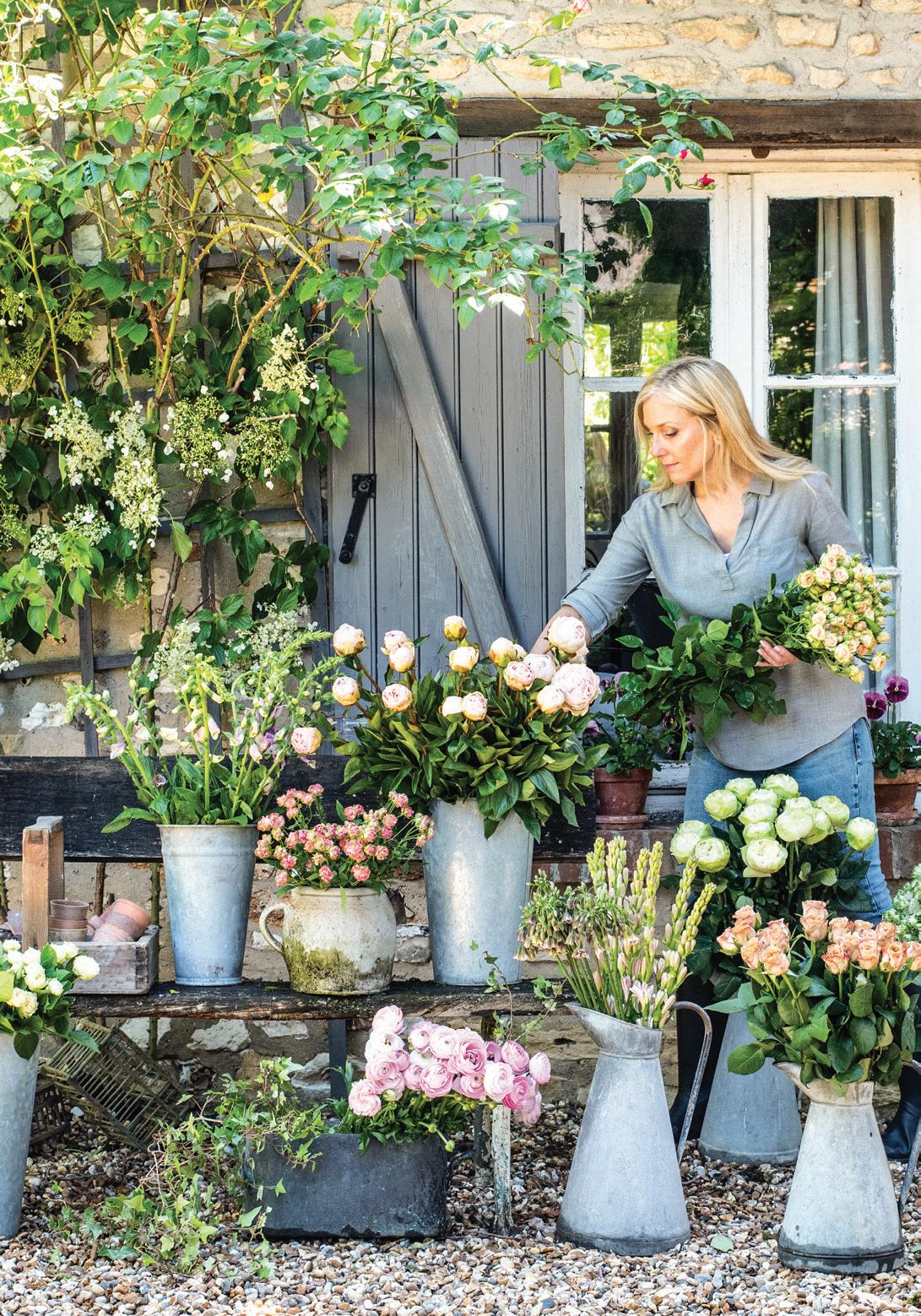

TATTIE ISLES AND HER TEAM AT TATTIE ROSE STUDIO CREATE IMMERSIVE EXPERIENCES WITH AN ABUNDANCE OF FOLIAGE, FLORALS, AND ALL MANNER OF FORAGED MATERIALS.
By Alice Welsh DoyleDorset- and Londonbased floral talent Tattie Isles thinks way beyond the petal. The designer focuses on the mood more than anything—what she wants guests to experience as they enter and engage with the setting. “It’s decidedly about surprise,” she says. “I like people to be transported and to question whether they imagined something or whether it really happened,” she says. Tattie focuses on the effects of light, movement, scale, fabrics, and even the music when executing her vision. While flower arranging is a vital part of her creative process, she really relishes the theatricality of putting together
Held at the peak of summer, this event included foxgloves, peonies, sweet peas, Alchemilla, willow lanterns, trailing greenery, and floating candles. “It took place in a wildlife park, so we added hints toward the color and vibrancy of the location,” says Tattie.
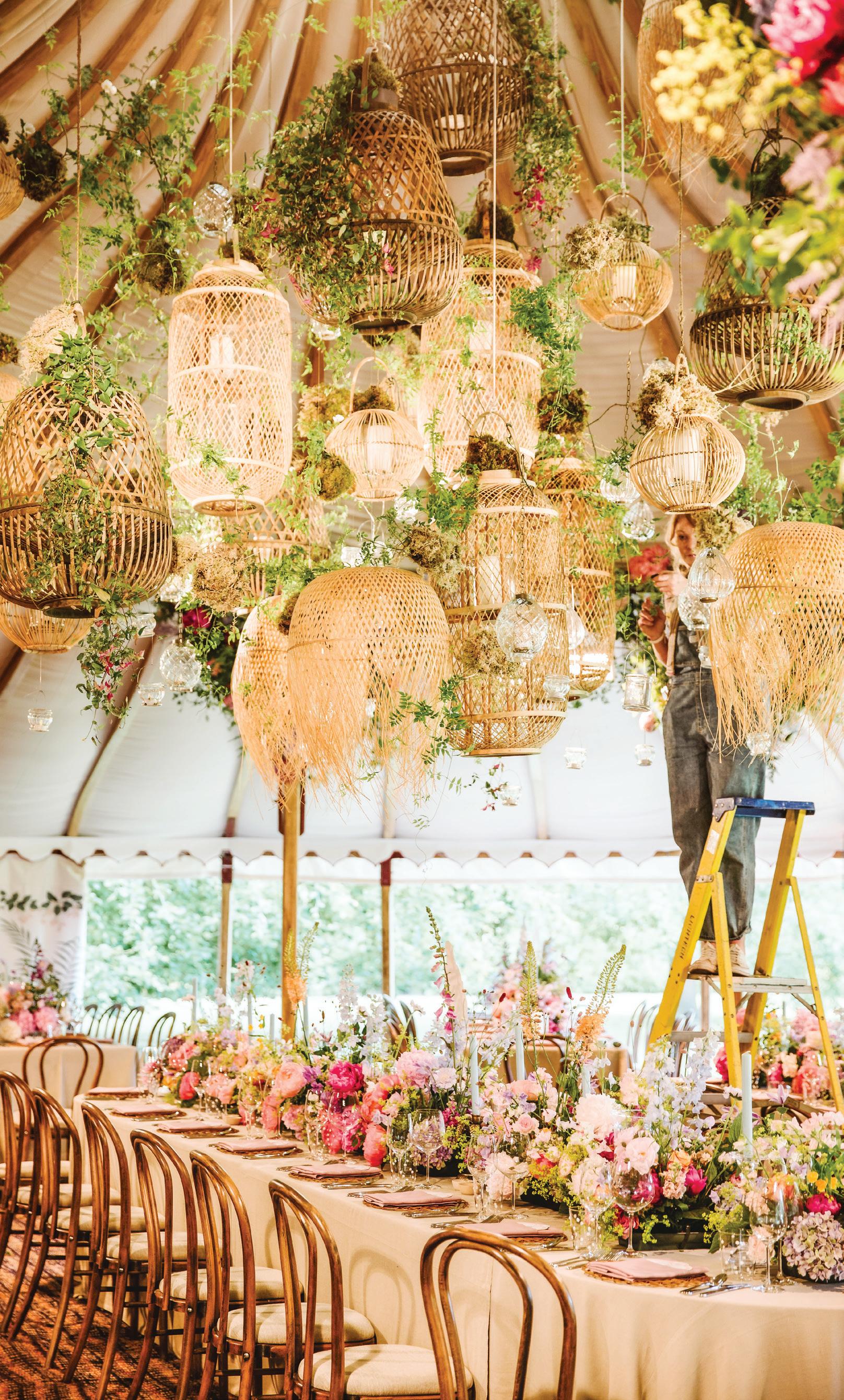
an event and making it come to life.
Tattie ignores trends and doesn’t really take notice of what others in the industry are doing. Her jumping-off place also doesn’t involve the palette or the constraints of the location. “I start by meeting clients in person because I believe the best collaborations are when you have good chemistry,” she says. “I try to read someone and work out what they are like and how to tell their story through the flowers. I usually ask people what they want the event to feel like and what they want their guests to feel rather than the aesthetic itself.”
Tattie first discovered her love for flowers while looking for a holiday job. “I was introduced to a floral designer in the area, and I basically started carrying buckets around for her,” she says. She soon realized that she had a true passion for the business. “It’s one of the most creative things that you can possibly do! You are constantly making
ABOVE: Tattie’s favorite time of year for flowers is late September. This exuberant table setting sings with garden roses, Japanese anemones, artichokes, hydrangeas, and fallen apples. LEFT: This setting evokes midsummer joy with scabious, foxgloves, delphinium, and Sanguisorba in a wire urn lined with block-printed fabric. “The fabric adds a layer to the design,” says Tattie.
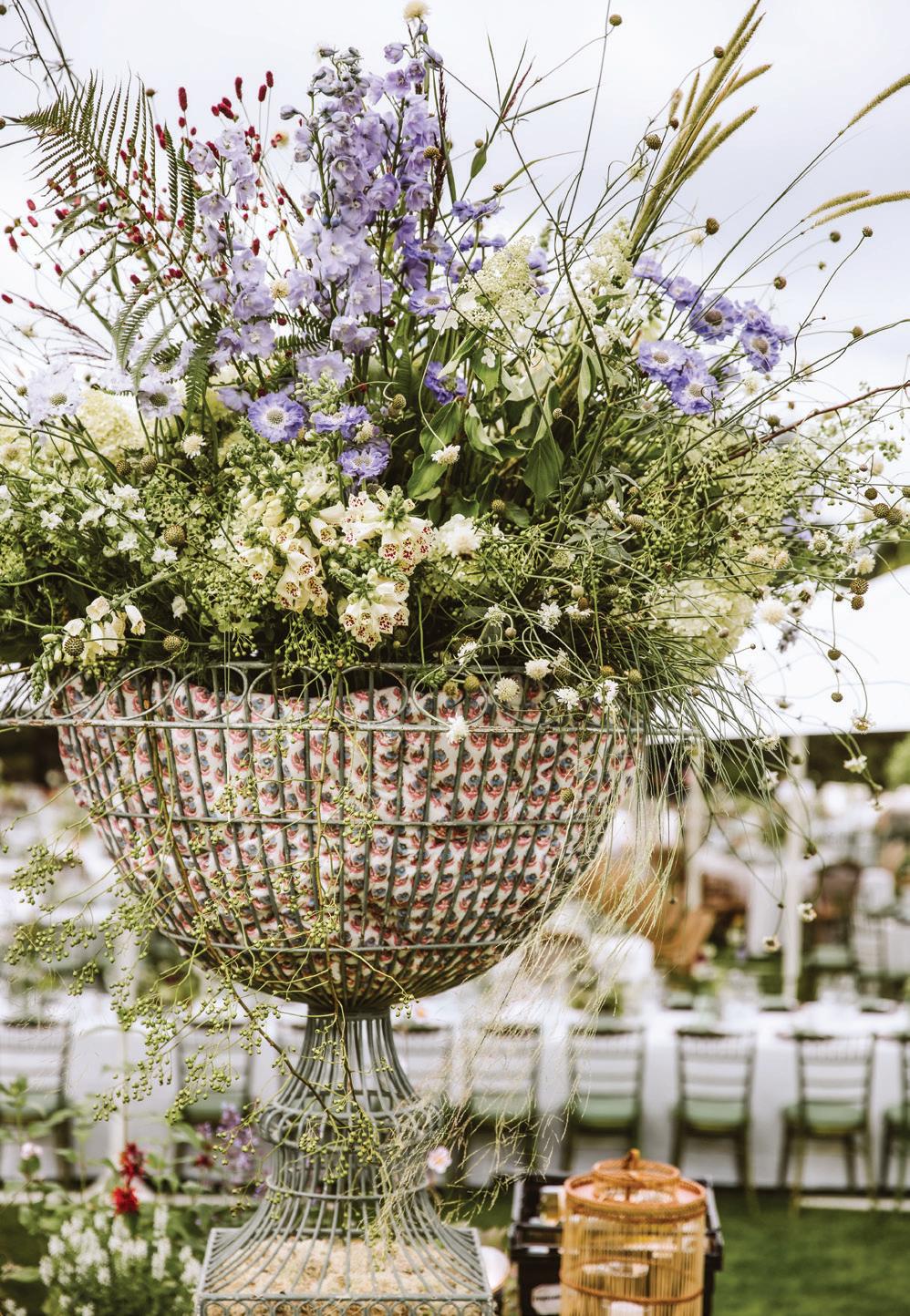
new things and then moving on to the next, which I love.” While Tattie didn’t find her calling for flowers until she was an adult, she always had an imaginative side, even as a child. “I did not like being stuck inside four walls,” she says. “I found the classroom challenging unless I was doing art or playing an instrument.” A lot of her talent also was fostered by her artistic mother, who now works with her in the business alongside Tattie’s husband, aunt, and close friends. “My father was in the military, and we moved around a lot and often lived in these funny little buildings that were very plain,” says Tattie. “My mom made them into remarkable

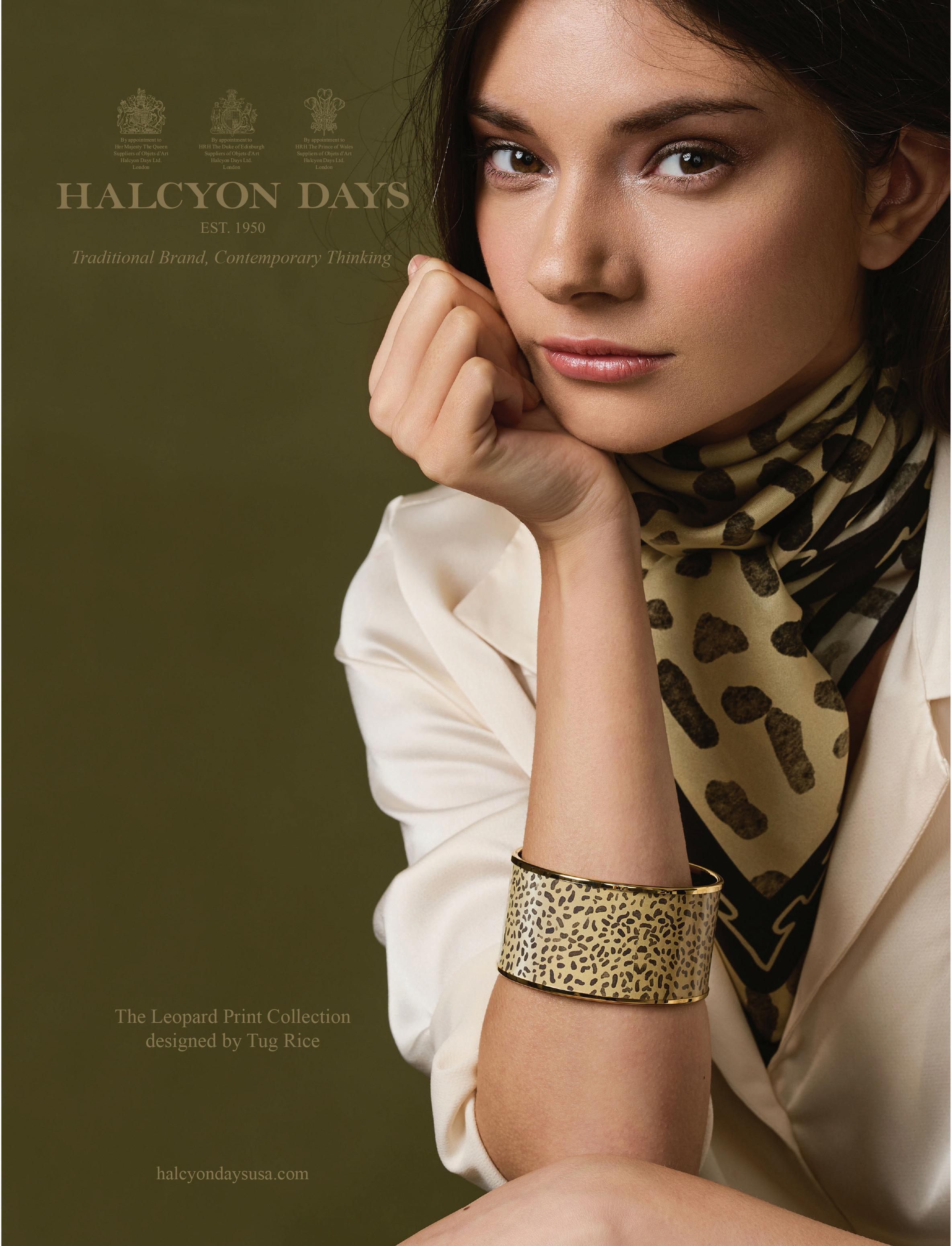
homes and settings for me and my siblings, and I experienced firsthand how our surroundings affect us and how, with a little ingenuity, you can make things lovely wherever you are.”
For her designs, Tattie enjoys using unconventional materials. “Anything in the natural world is up for grabs,” she says. “However, I do test everything first.” The team tries out floral designs
at different temperatures and with different lighting to measure longevity and durability. “We’ve fashioned a science lab of sorts,” Tattie says.
With three boys ages 2, 4, and 6, the designer now finds herself wanting to balance her work and home life more than ever. Because of that, the team is focusing on fewer but larger commissions going forward to allow more time for
CLOCKWISE
An abundance of sweet peas and alchemilla with apricots and rose petals brings summer joy to the south of France. ”The touch of red turns it from twee to amazing,” Tattie says. • The floral designer lights candles for a finishing touch. “I like my florals and all the other materials I use to be big, wild, untamed, and free,” she says. • For an autumn event in England’s County Durham, huge branches of beech, spindleberry, and the last of the garden roses are part of the mix. “Scale was of great importance in this vast castle,” says Tattie.
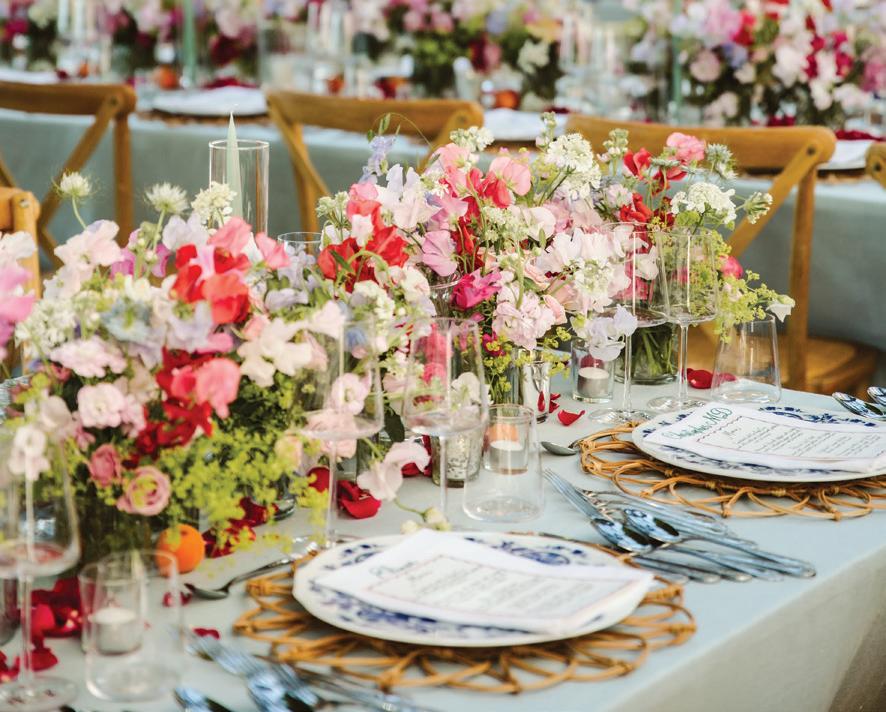


refreshing their pools of inspiration and tending the home fires. “I find the creative breaks make me look forward to doing it again,” says Tattie. “It’s like missing someone. If you see them all the time, you don’t have an opportunity to miss them and have that excitement of seeing them again. I think this approach will keep my creativity going for many more years.”
For more information, see Sources, page 84
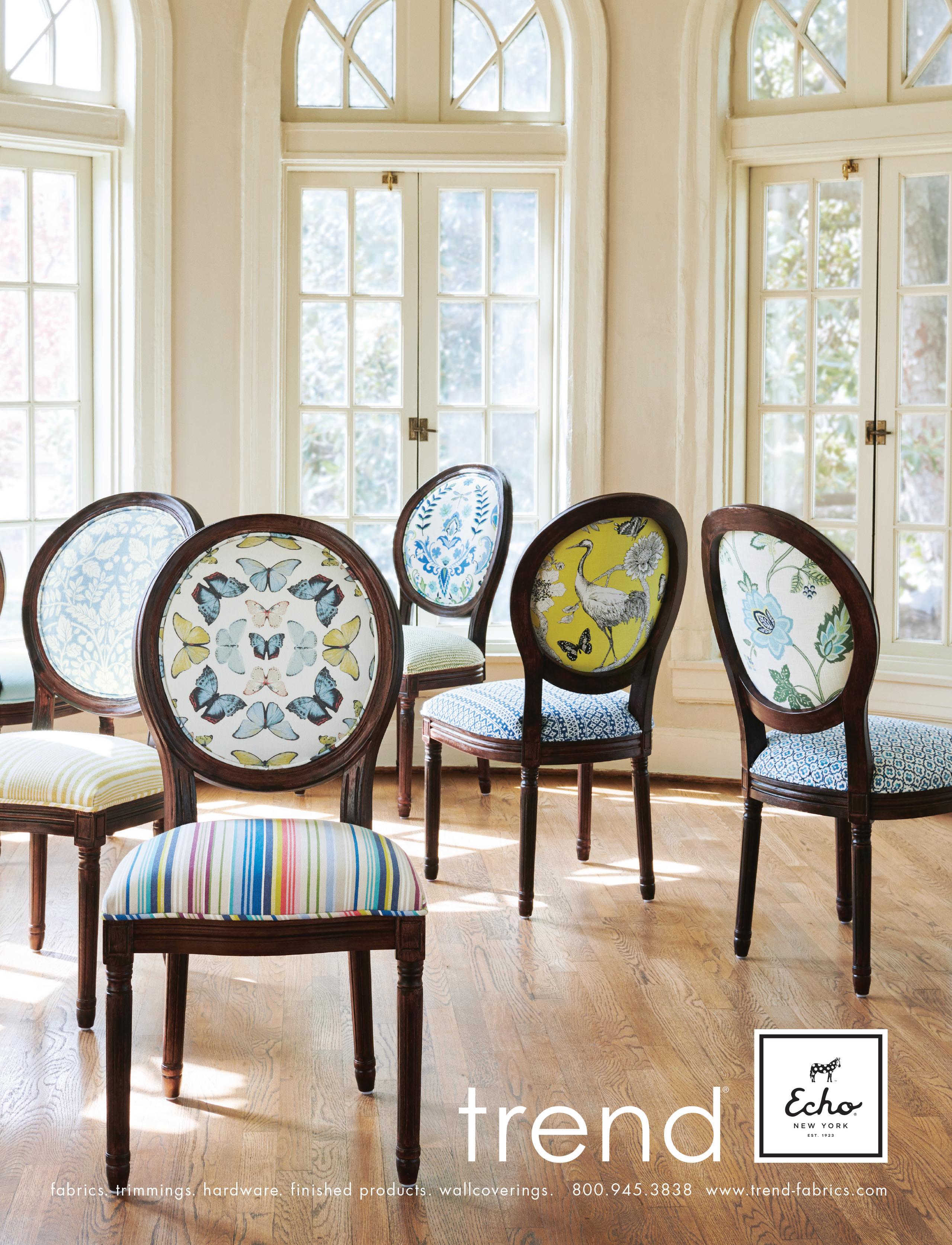

AT THE DELAWARE BOTANIC GARDENS, A BOUQUET OF COMMITTED VOLUNTEERS COMBINED WITH SUPERSTAR DESIGNER PIET OUDOLF AND HIS VISION TO TRANSFORM THIS CREEKSIDE FORMER FARMLAND.
 By Amy Brecount White
By Amy Brecount White
When you think of impressive mid-Atlantic gardens, estates such as the du Pont’s Winterthur and Longwood spring to mind. However, there’s a newer garden on the block that is making a name for itself, particularly because of its improbable story.
The Delaware Botanic Gardens at Pepper Creek sprouted without inherited acreage or a wealthy donor. Its locale
in a rural area about 30 minutes from Bethany Beach is not far from where many skilled retirees looking for “a give-back project” have settled. A band of these visionary volunteers came up with the idea of creating a lovely, sustainable garden nearby. To jumpstart the project, Executive Director Sheryl Swed and President Ray Sander, who are married, put “a little something in the kitty,” as Sheryl says.
The next step was to find some land, so Sheryl, who had served 25 years in the U.S. government, and some of the other volunteers contacted the Sussex County Land Trust with their idea. They toured a 37-acre farm that had woodland so overgrown with greenbrier they couldn’t even access the creek from the property. A supporter advised them “to find those people who can look at a property and squint and see the
RIGHT: Scores of committed volunteers, including many retirees, generously donate their energy and time to plant, weed, and maintain these expanding gardens. BELOW: More than 185,000 species of tulips, crocuses, and daffodils illuminate the spring months and provide needed nectar for early pollinators.
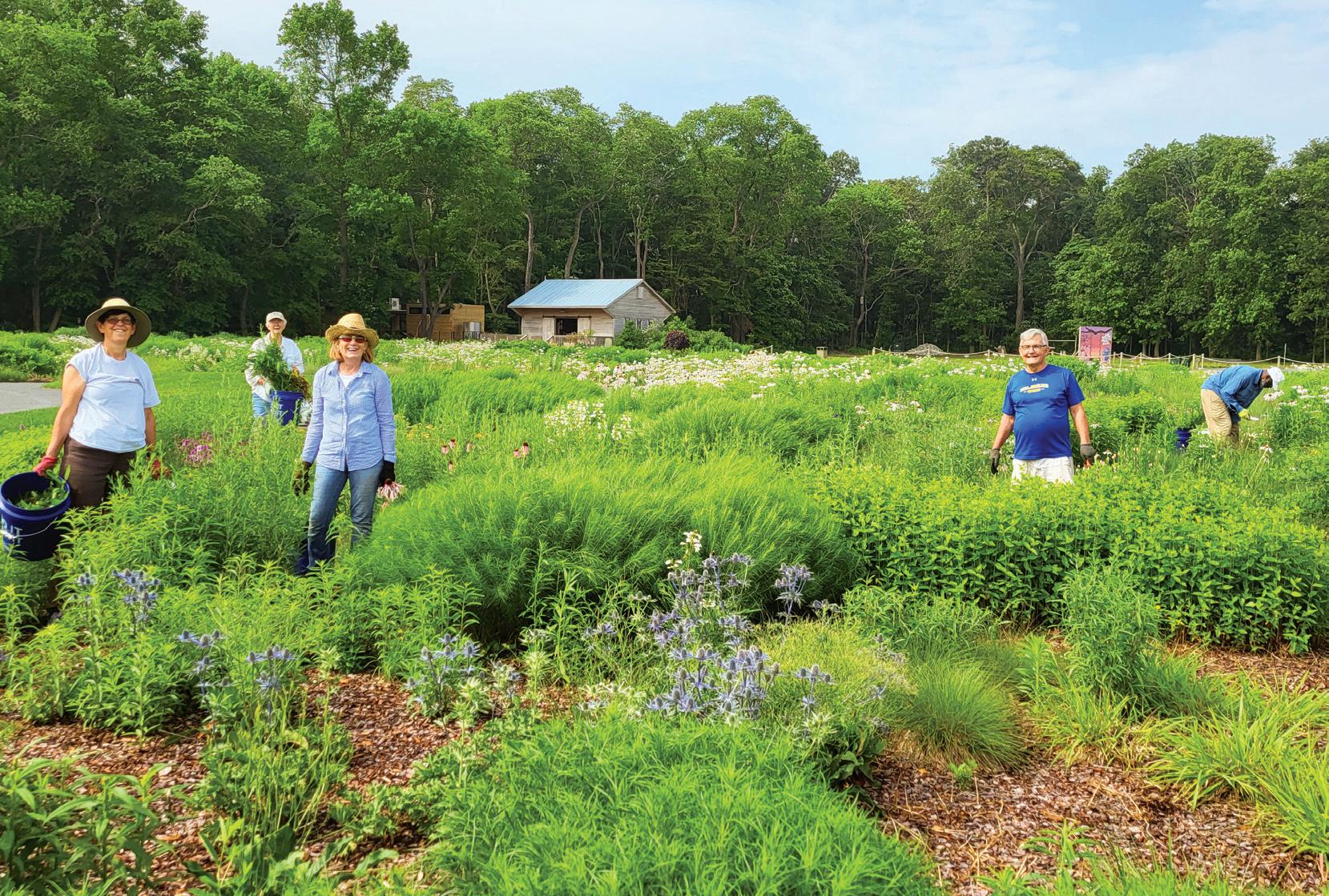
potential,” says Ray, who has a financial management background. Undeterred, the group formed a nonprofit, and in 2014 the trust leased them the land at $1 for 99 years in a twice-renewable contract.
Needing more funding and a designer, they reached for the stars and contacted Piet Oudolf, the renowned designer of The High Line Garden in New York City and the Lurie Garden in Chicago. Known for his emphasis on perennials and native plants, Oudolf seemed the ideal choice to help create beautiful, educational gardens that also support local ecosystems. The unusual origin story of
the land drew Oudolf’s admiration, and he agreed to design 2 acres, now known as the Piet Oudolf Meadow.
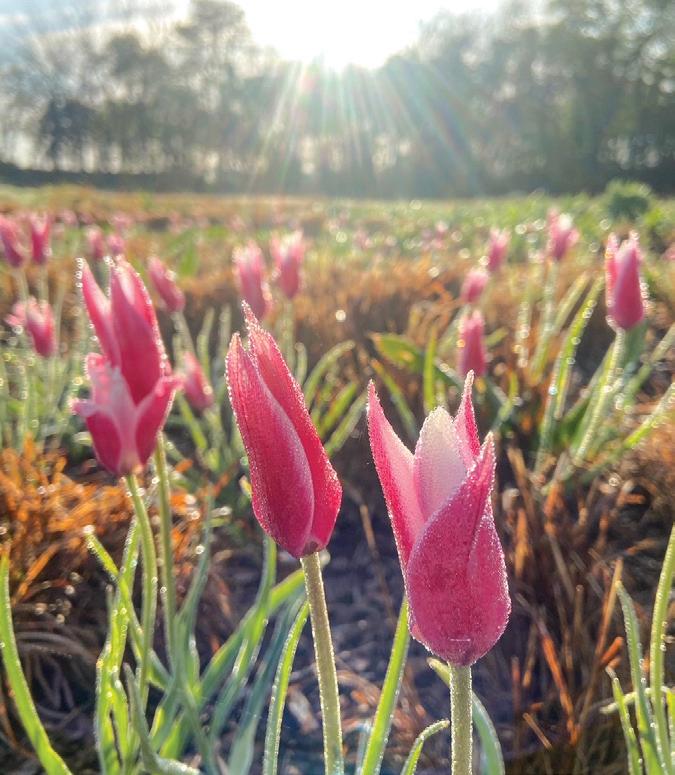
Then came a $750,000 grant from the Longwood Foundation. That grant combined with Oudolf’s design and the renewable lease were “the three rocket boosters that allowed the project to lift off and achieve orbit,” says Ray. “Other foundations and donors viewed the Longwood Foundation grant as validation of the project’s worthiness and sustainability.”
With additional support from local businesses, the gardens grew from a vision on paper to a public garden by 2019. The slew of donations ranged from engineers who tackled zoning changes pro bono to nursery owners who added extra plants to orders. Sheryl even found the architect for the nature-inspired building that houses restrooms while talking to her Pilates teacher, who happens to be married to one. “We needed to design a public bathroom
that matched the beauty of the garden,” says Sheryl. “We didn’t want to have some utilitarian shack.”
Carol McCloud, vice president and former human resources guru, oversees the volunteer program. She says those people who generously give of their time are what set this garden apart. “We come together from different areas and walks of life and backgrounds, but we all have a passion for the gardens.”
On her tours, Carol loves to share anecdotes about Oudolf’s visits and his hands-on involvement. When he saw the first iteration of a grassy mound in his design, he “put his hands on his hips and was shaking his head,” she says. “Then he asked for a shovel. He worked with the volunteers the entire day, getting that mound to the circumference and height he wanted.” After grasses had grown over it and they had installed “keep off” signs to maintain its beauty, Oudolf again shook his head. Ignoring the signs, “he ran up on the mound and
“Other foundations and donors viewed the Longwood Foundation grant as validation of the project’s worthiness and sustainability.”
—RAY SANDER, PRESIDENT OF THE DELAWARE BOTANIC GARDENS
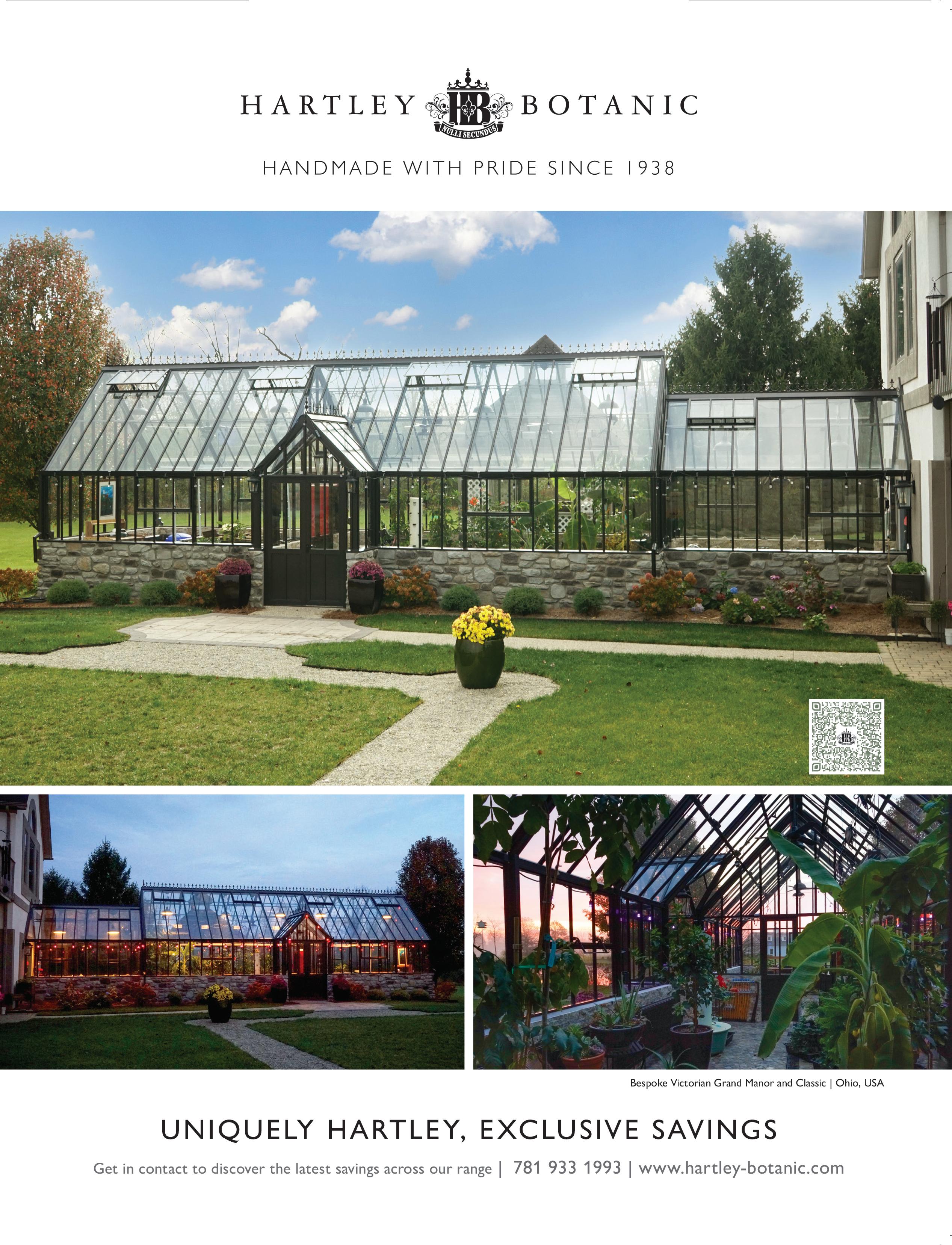
put his hands up in the air—this big, wonderful man,” Carol continues. “Then he welcomed everybody to come up. He wanted people to have the opportunity to feel the grass and to sit on the grass. And he wanted kids to roll down the hill!”
Piet’s Meadow, as it’s commonly called, includes prairie dropseed as a matrix plant, says Stephen Pryce Lea, the garden’s director of horticulture and educational programming. Stephen and his team offer programs that emphasize the wildlife benefits of using native plants, such as a workshop on which perennials will attract and support butterflies. The native plants appear in all of the gardens, including a woodland garden, an education garden, and the Rhyne Garden, which filters the parking-lot runoff. But native species aren’t the only things growing. Over the last two years, 50-plus volunteers have planted more than 185,000 bulbs, including crocuses, daffodils, and species tulips. Chosen with Oudolf’s approval, these early bloomers add bright splashes of color and nectar.
TOP TO BOTTOM: The award-winning, eco-friendly restrooms include rain chains that feed a living wall, as well as several rain gardens to follow stormwater management practices. • Abundant native perennials, shrubs, and trees—like coneflowers, asters, winterberry, and oaks— create a welcoming habitat and ample food for swallowtail butterflies, as well as bees and a variety of birds.
Another big undertaking involves more than 100 volunteers who return to the garden early each year to cut back the seedheads and leave them through the winter to support the habitat. While some might view this style of gardening as messy, “that mess is so valuable,” says Stephen. He often shares advice on how to have a wildlife habitat and “still keep it tidy.”
As the gardens expand, fundraising has exceeded $8 million. In 2021, the Delaware Botanic Garden stewards earned the Governor’s Outstanding Volunteer Service Award for transforming this now thriving corner of their state. Proof that the improbable is probable.


 PHOTOS (TOP TO BOTTOM): PROVIDED BY SEA STUDIO ARCHITECTS; PROVIDED BY DELAWARE BOTANIC GARDENS
PHOTOS (TOP TO BOTTOM): PROVIDED BY SEA STUDIO ARCHITECTS; PROVIDED BY DELAWARE BOTANIC GARDENS

DECORATE: FLOWERS

 By Margaret Zainey Roux • Photography by Erika Dufour
By Margaret Zainey Roux • Photography by Erika Dufour
As a child, Kelly Marie Thompson used to sneak behind the peony bushes while playing hide-and-seek in the backyard of her family’s Chicago bungalow. “Every inch of that yard brimmed with rose bushes and snapdragons and was shaded by a big apple tree,” says the floral designer. “I honestly can’t think of a time when I wasn’t surrounded by flowers. They’ve always been a part of my life and my memories. It’s hard to know if I found them or if they found me!”
Although her training is in painting and printmaking, Kelly Marie followed her heart and ventured into floral design after working in the floral department of a local store. In 2002, she founded Fleur Inc., a floral design studio and boutique in Chicago’s eclectic Logan Square neighborhood.
“In fine art and floral art, I love the challenge of creating unique and unexpected color combinations,” she says. “Currently, I’m drawn to the combination of sky blue and neon orange as representations of the sky at dawn and at dusk. It reminds me that flowers are a beautiful way to start and end my day.”
“The sunsets in Tuscany seem to last for hours and never fail to take my breath away,” Kelly Marie says. “This arrangement recalls the way the light hits the landscape. It’s so textural, and the different shapes in the arrangement nod to the land.”
This June, the designer will return to the idyllic Tuscan town of Città della Pieve to host her second pilgrimage aptly named My Tuscan Gathering. With a private villa as home base, Kelly Marie will lead a small group as they forage at a local flower farm for their own designs. They will also make pasta, enjoy wine tastings, and explore the town’s vibrant markets, cafes, and live music scene.
“When I visit Città della Pieve, I find the scent of linden trees that lingers in the streets pleasantly intoxicating, along with the chimes from the bell tower and the scuffle of footsteps on the old cobblestones,” Kelly Marie says. “Gathering there is extremely special because it celebrates so much of what’s important to me—flowers, food, and connecting with others.”

DECORATE: FLOWERS




Clippers
Scissors
Compote
Chicken wire
Waterproof floral tape
Olive branches
Rosemary branches
To ee roses
Juliette roses
Peach ranunculus
Geum
Wheat Poppy pods
STEP 1 Form a ball of chicken wire so that it fits snuggly inside the bowl of the compote. Secure the ball with waterproof tape by making an “X” across the top; then fill with water up to 1 inch from the top.

STEP 2 Start with the olive branches, and let them rest and curve on their own while securing them into the wire ball. Continue with the rosemary branches to create a base that is full and lush.
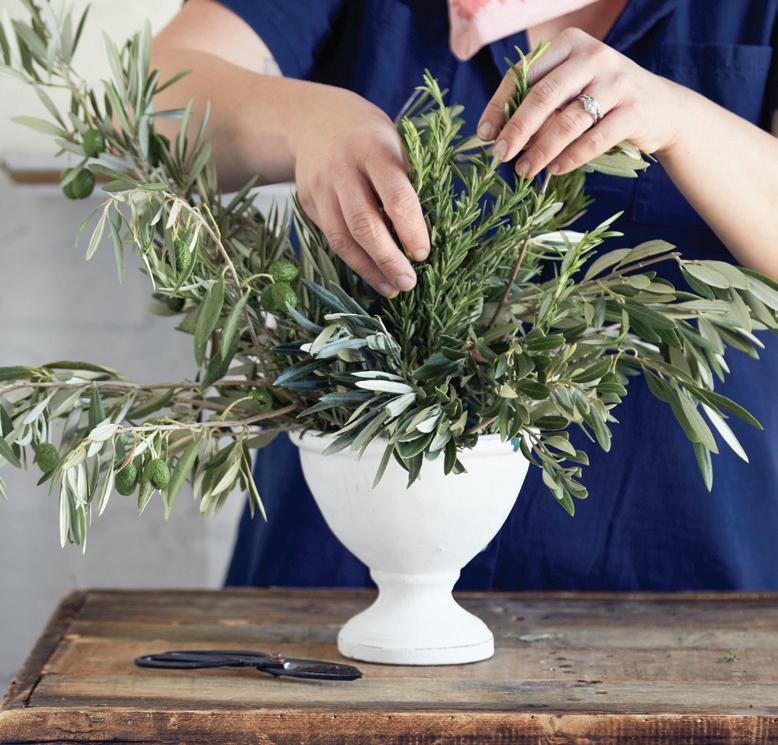
STEP 3 Add your focal blooms. Start with the roses to help form a nice shape; then scale down one size and add in the ranunculus to fill any gaps.



STEP 4 Pepper the little blooms of geum, wheat, and poppy pods throughout the arrangement, making sure to let some reach out long and strong to create negative space and allow for the arrangement to breathe.
TIP: Step back a few times while designing to see the whole picture.
For more information, see Sources, page 84
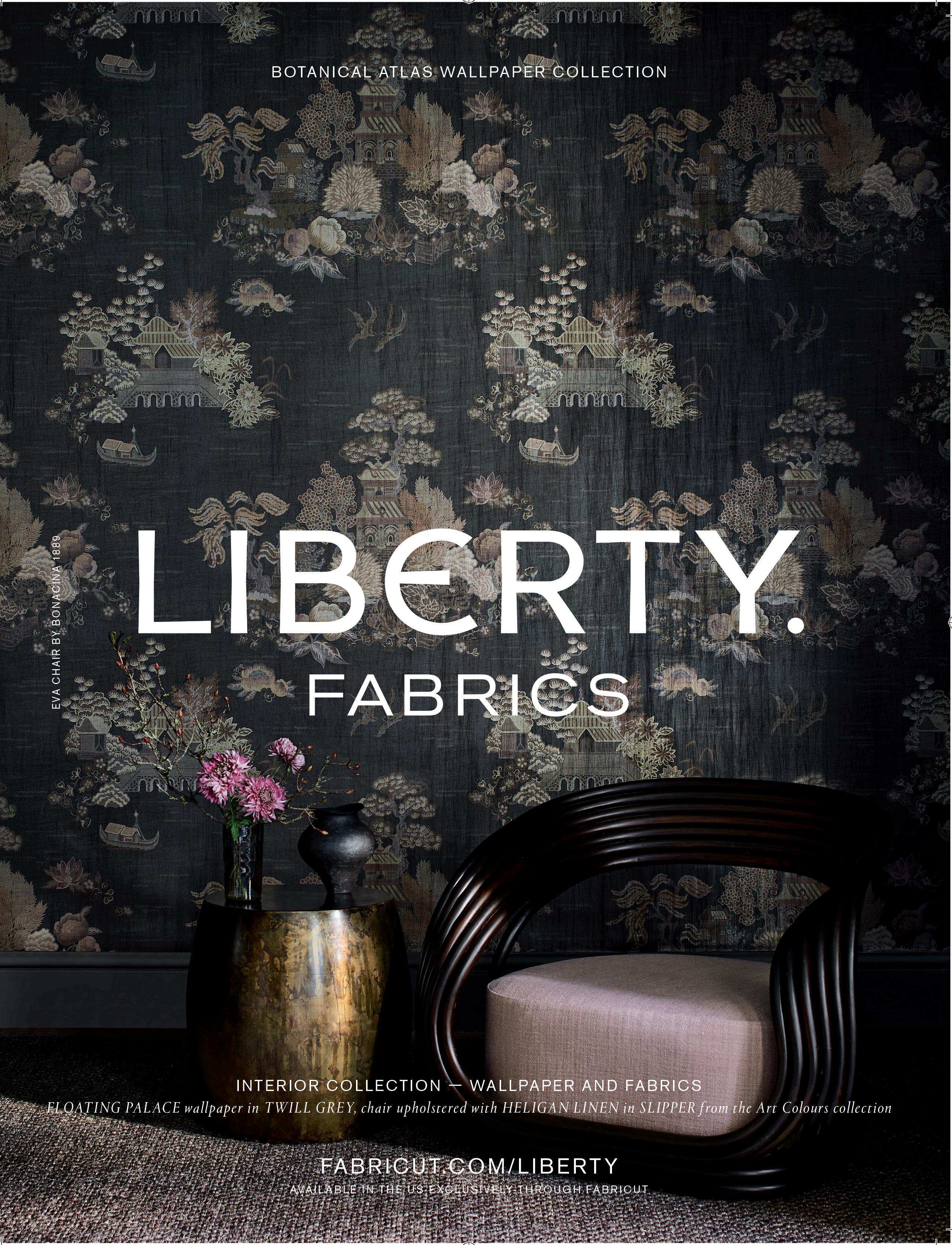
WHETHER YOU ARE LOUNGING ON THE SAND, SWIMMING IN THE SURF, OR EXPLORING ON A CATAMARAN, THESE SEASIDE ESSENTIALS WILL HAVE YOU SUNNING IN STYLE.
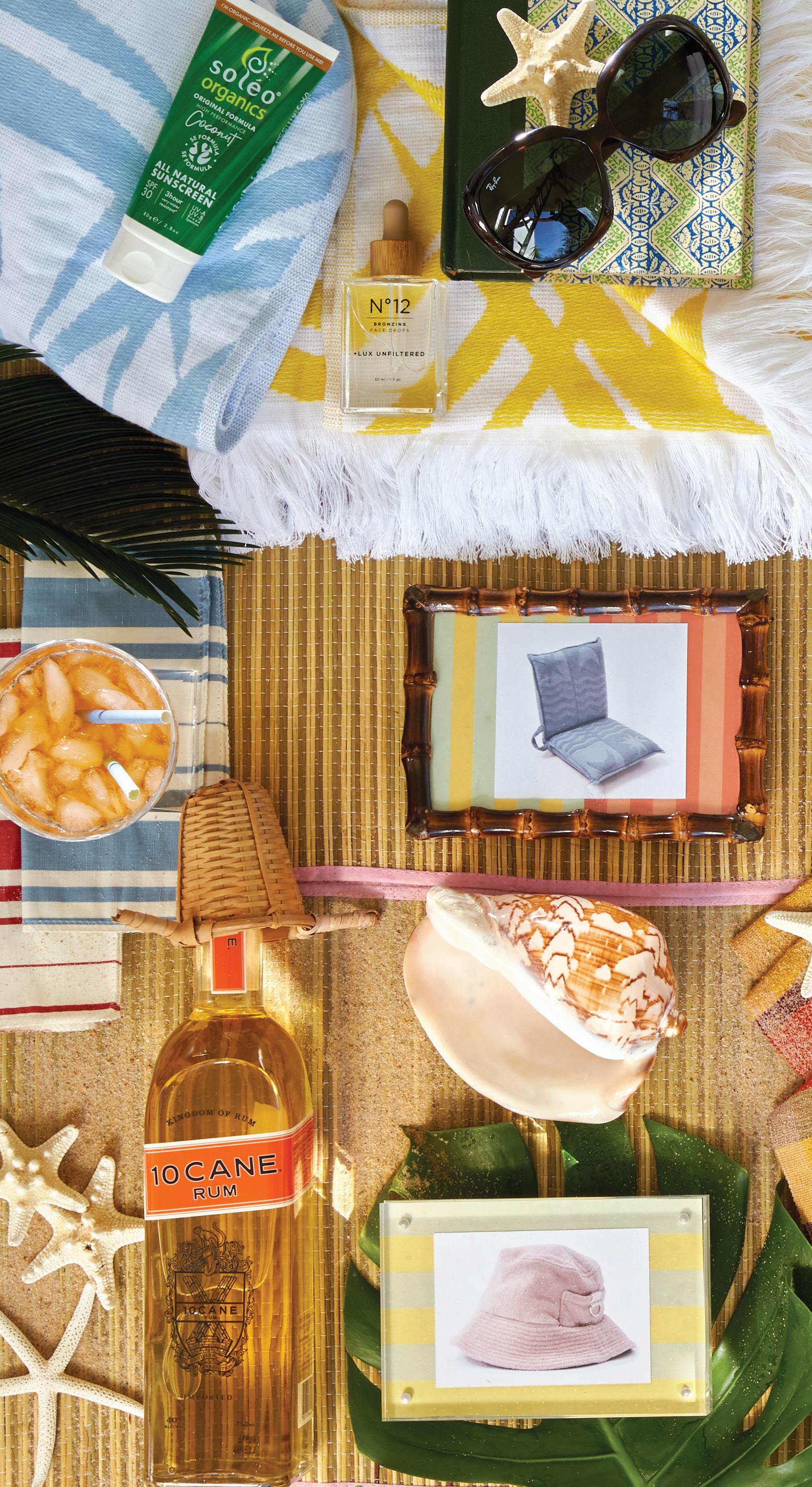
1 High Performance Sunscreen ($22) in “Coconut” from Soléo Organics; soleoorganics.com 2 & 3 Zebra Palm Beach Towels ($95/each) in “Pool Blue” and “Canary” from Matouk/Schumacher; matouk.com
4 N°12 Bronzing Face Drops ($42) from Lux Unfi ltered; luxunfi ltered. com 5 Jackie OHH II Sunglasses ($178) in “Black” from Ray-Ban; ray-ban.com
6 Terry Travel Lounger Chair ($100) in “Le Med” from Sunnylife; sunnylife.com
7 & 8 Baldwin Stripe fabric by Sarah Bartholomew (pricing to the trade) in “Blue” and “Poppy” for Lee Jofa; kravet.com


9 10 Cane White Rum ($24.99); whiskeymix. com 10 The Towelling Bucket Hat ($59) in “Dusty Pink” from Business & Pleasure Co.; businessandpleasureco.com
11 Herbal Beauty Tea ($45) in “Flourish Like a Flower” from Tata Harper; tataharperskincare.com
12 The Holiday Beach Umbrella ($199) in “Vintage Gold” from Business & Pleasure Co.; businessandpleasureco.com
13 Blaise








Natural Ra a Platform Sandals ($295) from Loe er Randall; loe errandall.com
14 Charm School: The Schumacher Guide to Traditional Decorating for Today book ($55) published by Phaidon; phaidon.com
15 Cabana Stripe Travel Pouch ($59) in “White-Light Blue” from Mark & Graham; markandgraham.com
16 Round Woven
Tote ($55) from Bella Cucina; bellacucina. com 17 Garza Marfa Desert Blanket ($225) in “Yellow” from Bella Cucina; bellacucina.com 18 Glow Oil ($38) from Supergoop!; supergoop.com









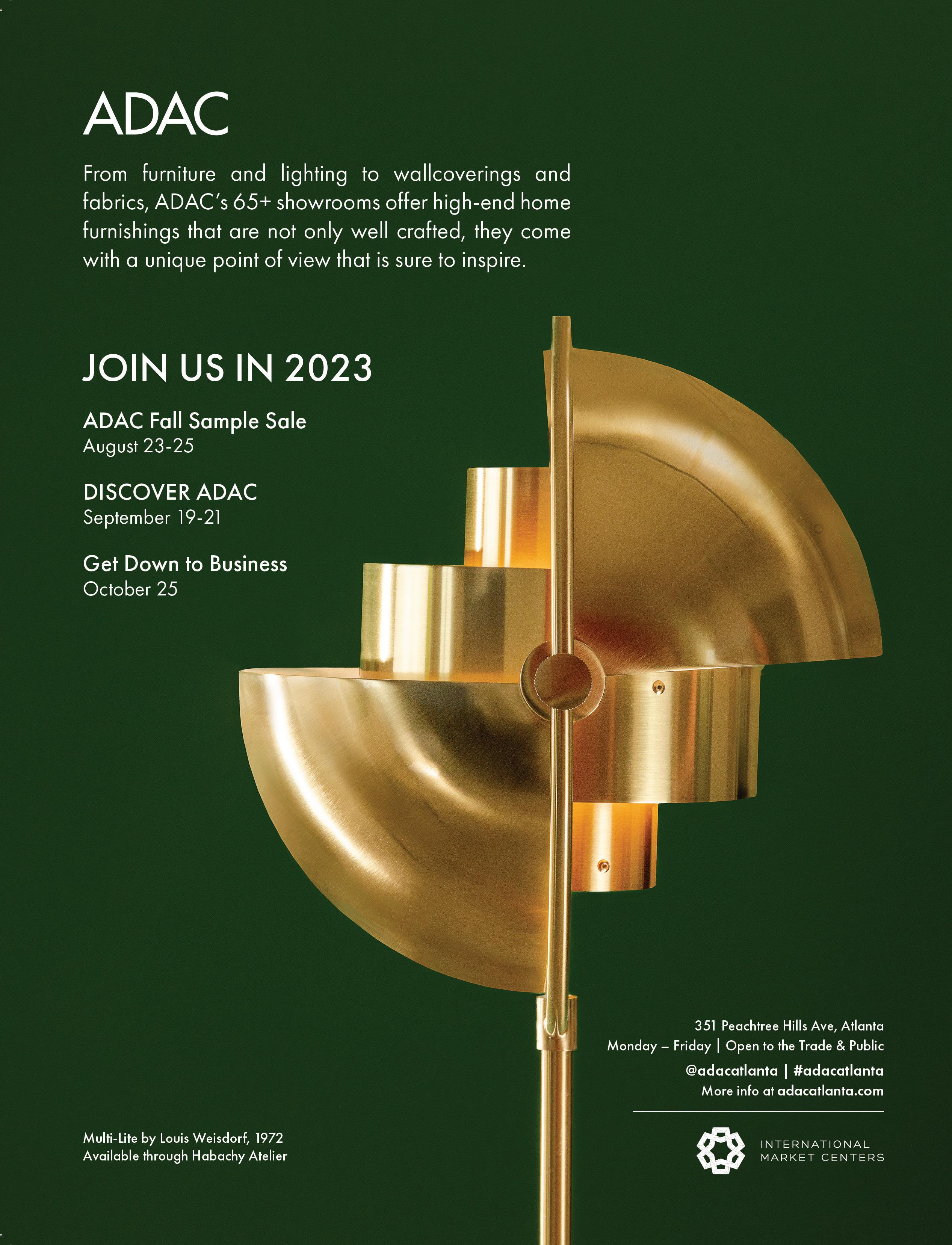

With a lifelong love of gardening, designer Charlotte Moss has long been intrigued with what draws people— especially women—into the world of horticulture. Some have made it their professions, while others have become enthusiasts, patrons, philanthropists, or simply weekend hobbyists. And then there are those who write about all things gardening. In her new column for FLOWER, Charlotte explores some of these women and the journeys that led to their passions for plants and flowers. She also has a forthcoming book with Rizzoli on the subject of gardening women set to release fall 2024.
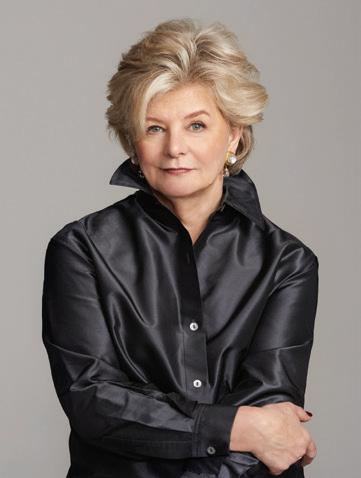
BEST KNOWN FOR SERVING AS EMPRESS OF FRANCE WHILE MARRIED TO NAPOLEON BONAPARTE, JOSÉPHINE ALSO CREATED HER OWN LEGACY IN THE GARDENS OF CHÂTEAU DE MALMAISON.
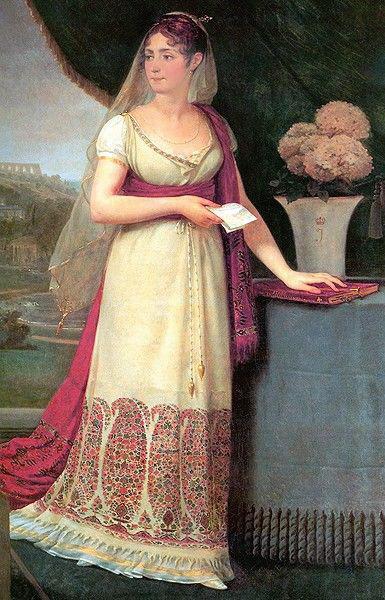
 By Charlotte Moss
By Charlotte Moss
Years ago, I read The Man Who Painted Roses by Antonia Ridge. In this book about the life of Pierre-Joseph Redouté, often referred to as the Raphael of flower painters, I learned of a tree gifted to him by Empress Joséphine—a cedar of Lebanon that was planted at his home in Meudon, close to Paris. Intrigued, I sought out the tree on a visit to France. Located on private property but visible from the hilltop where I stood, this majestic symbol of strength is now in its 200th-plus year.
Many believe this tree embodies the strong bond between the artist and his patron. Redouté became Joséphine’s most significant and steady advisor on matters of art and the garden. His most famous work, “Les Roses,” a three-volume set with 170 hand-colored plates, was published after Joséphine’s death but was originally inspired by the empress and her garden. While Joséphine did not show much interest in roses during her early years of gardening, she later became enamored with the flower. Thanks to her acquisitive nature, 250 new varieties of roses were introduced to France. In addition, André Dupont, Joséphine’s horticulturalist, introduced 25 new cultivars through his pioneering method of controlled pollination.
Prior to marrying Napoleon, Joséphine was married to Alexandre de Beauharnais, a philanderer who was rarely at home. While she did have two children with him, she never felt settled and content. In some way, this may explain her dedication to creating a beautiful home and a horticultural phenomenon at Malmaison, the chateau she shared with Napoleon. The surrounding landscape park contained follies, pavilions,

and other greenhouses filled with plant specimens. Exotic animals from around the world roamed the park amidst this botanical wonderland. Joséphine became identified with her rare, red-beaked black swans from Australia, the most exotic animals in her menagerie. Later the swan would become an emblem of the empress and could be found adorning furniture, engravings, and embroideries.
When Napoleon and Joséphine married, everyone in Napoleon’s circle— from sea captains to ambassadors to foreign leaders—was encouraged to send or bring botanical specimens to Malmaison. The gift of plants earned favor with the ruler of France while simultaneously helping Joséphine build her gardens and fill her greenhouses with varieties from around the world, many of which had never been cultivated

in Europe. The first seeds the empress received were from her mother living in Martinique, who sent mauve bougainvillea, sugar cane, and the beautiful blue myosotis. Joséphine’s Magnolia macrophylla came from the banks of the Catawba River in North Carolina as a result of the exploration of André Michaux. The blue Lily of the Nile, Agapanthus umbellatus, was brought to her by botanists who accompanied Napoleon on his Egyptian campaign. Sir Joseph Banks gifted the empress Nicotiana undulata. The German naturalist and polymath Alexander von Humboldt ventured on a five-year voyage with Aimé Bonpland that brought lobelias, mimosa, and heliotropes. And even Napoleon, while on campaign, sent over 800 specimens from Schönbrunn in Austria, including eucalyptus, hibiscus,
dahlias, and rare tulips. And then there were the two plants named for Joséphine—Brunsvigia josephinae (a coral amaryllis from South Africa) and Lapageria rosea (the Chilean bellflower). Her greenhouses also featured fan palms, bananas, Indian bean trees, lemons, and Seville oranges.
Between 1803 and 1805, Joséphine built the Château de la Petite Malmaison, which consisted of a reception pavilion attached to a greenhouse. Measuring approximately 164 by 62 feet, it was the largest structure that had ever been built of glass at that time in France. While the pavilion no longer exists, it was without a doubt the precursor of the glass-andsteel structures that followed in the 19th century.
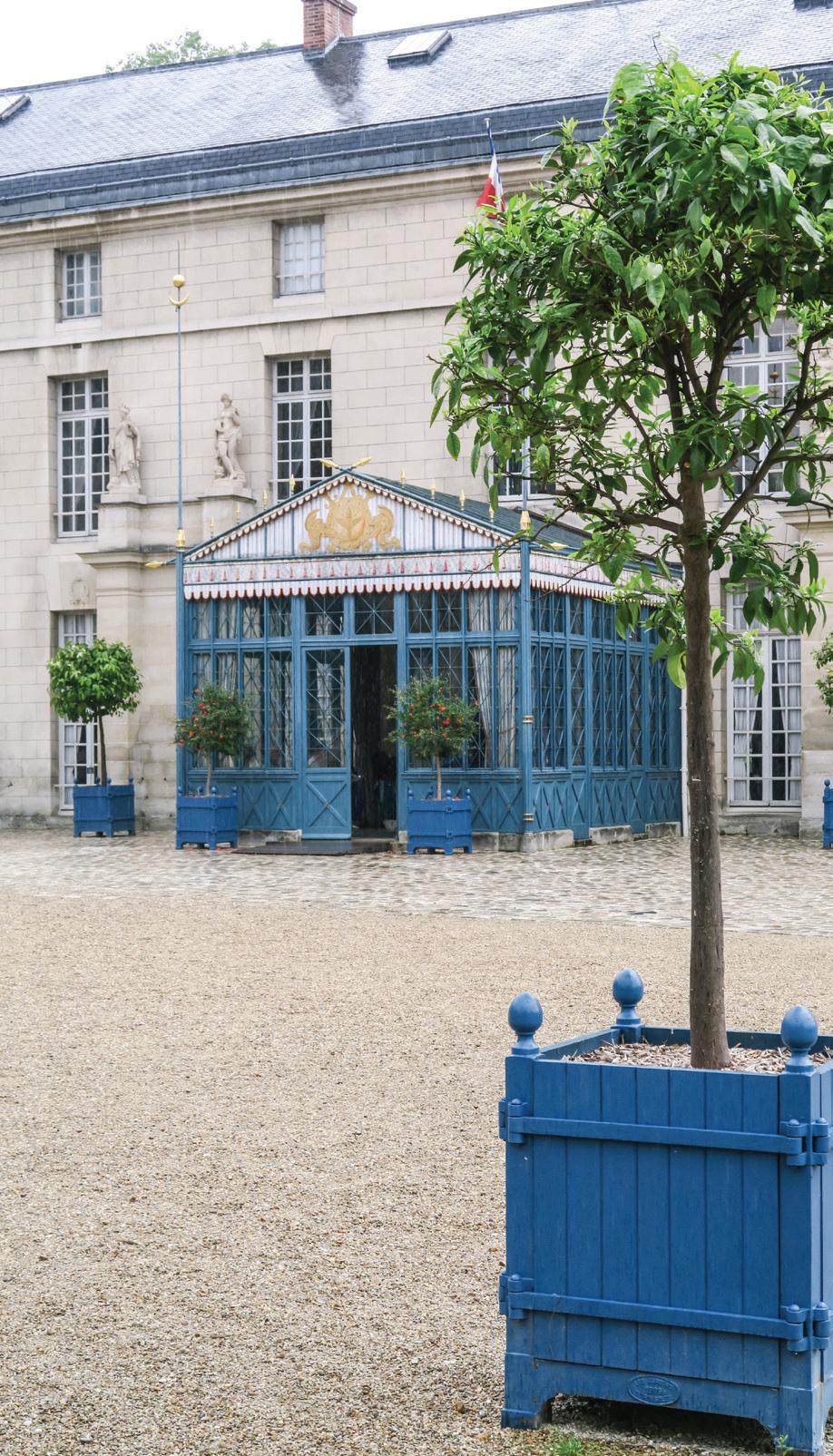
Joséphine was a romantic who preferred le style anglais. Like the
philosopher Jean-Jacques Rousseau, she believed in a naturalistic approach to gardening with winding paths, ponds, and mixed borders. In addition, Joséphine adapted Humphry Repton’s idea of locating flower gardens close to the house. These maneuvers in the garden garnered her a reputation of being a radical. Thanks to her imagination and determination, both reinforced by the enormous resources of an empire, the empress established a special place for Malmaison in garden history.
After only five years of marriage, Napoleon chose to divorce Joséphine due to her inability to produce an heir. However, his love for the empress never waned. Joséphine was distraught over the end of the marriage but eventually came to terms with it and lived the remainder of her life at her beloved Malmaison.
The gift of plants earned favor with the ruler of France while simultaneously helping Joséphine build her gardens with varieties from around the world.
CLOCKWISE FROM BOTTOM, FAR LEFT: The metal tent entry at Malmaison was designed by French architects Charles Percier and Pierre Fontaine, who together with Napoleon created one of the best examples of the Empire style in France. • One of Redouté’s hand-colored engravings from “Les Roses.” • Joséphine’s bed at Malmaison, made by the renowned ébéniste FrançoisHonoré-Georges JacobDesmalter, features the swan which became an emblem of the empress. • Malmaison at the height of the season is an homage to Joséphine’s love of roses.

Perhaps author David Stacton best describes Joséphine’s state of mind at that time in his book, The Bonapartes: “… she accepted divorce, she accepted banishment, she accepted everything, but she would not accept removal from Malmaison.” It was there that the empress unexpectedly died from pneumonia on May 29, 1814, Aimé Bonpland at her side. Later, Bonpland wrote to his sister, “… the death of the Empress … came like lightning … (it) has altered my life completely.” Upon hearing of Joséphine’s death, Napoleon, living in exile on Elba, did not leave his room for two days.



 By MARGOT SHAW
Photography by MICHAEL MUNDY
By MARGOT SHAW
Photography by MICHAEL MUNDY
Rich with provenance and personality, this East Hampton property lands in the capable hands of style maven Liz Lange for a thoughtful, sophisticated makeover.

of buy old, tear down, build big, Liz Lange has bucked the trend. While she did buy old (a 100-year-old property in East Hampton, New York), she chose to respectfully restore and redecorate the home and its surroundings. Known as Grey Gardens, the storied shingle-style “cottage” near the sea possesses a unique and colorful past, having once been owned by the campy, cat-collecting cult figures “Big” and “Little” Edie Beale, Jackie Kennedy Onassis’s aunt and first cousin. The house was later bought and rescued by editor Sally Quinn and her husband Ben Bradlee, executive editor of The Washington Post at the time.
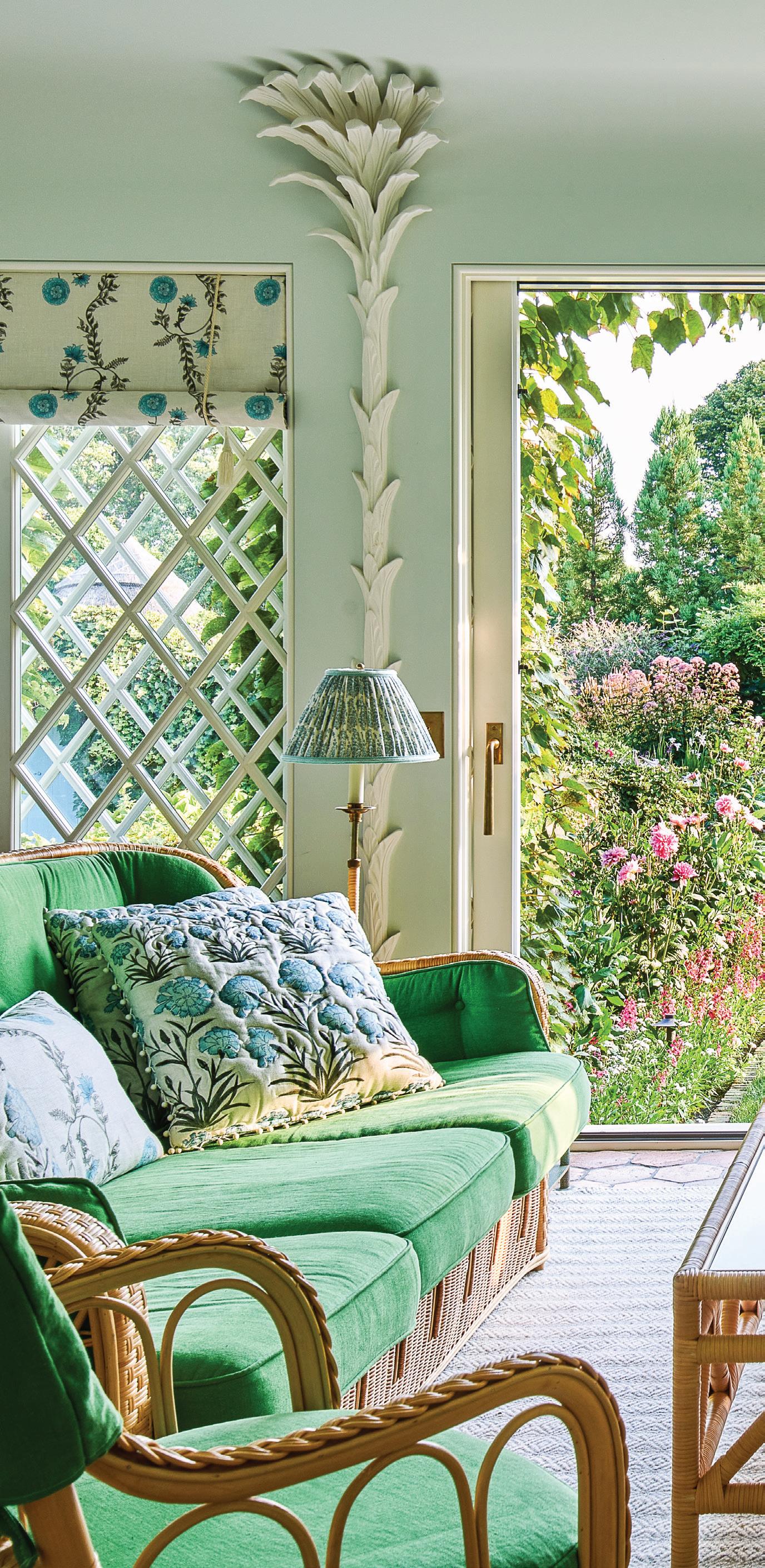
With original plans drawn by Arts and Crafts architect Joseph Greenleaf Thorpe, the home was built for Mr. and Mrs. Fleming Stanhope Philips in the early 20th century. Robert Hill and his wife, Anna Gilman Hill, a gifted garden writer and plants-person, then purchased it and turned their attention to adding a substantial garden component to the property. Anna, taking the climate and locale into consideration, imported ornate concrete walls from Spain that would shield the garden from the briny sea spray and punishing Long Island winds. Then she and landscape architect Ruth Dean designed the gardens using a palette of pastel flowers, including lavender, phlox, delphinium, and climbing rose. “It was truly a grey garden,” Anna once wrote. “The soft grey of the dunes, cement walls, and sea mists gave us our color scheme, as well as our name.”
The home was later bought by Phelan and Edith Beale but eventually fell into disrepair when the Beales divorced. Edith, known by many as “Big Edie,” was left with no resources for upkeep and a somewhat eccentric frame of mind. She and her daughter, “Little Edie,” lived in unimaginable squalor for many years until the neglected property was acquired by Sally Quinn and Ben Bradlee. The couple kept all the original furniture, including heirloom wicker pieces found in the attic, and completely restored and decorated the house for their own weekend and holiday enjoyment.
In 2015, Liz and her husband, a corporate lawyer, took the house as a summer rental. “It was love at first sight!” Liz says. “I knew I wanted to get my hands on it but didn’t think it would ever be possible. I had the idea to offer to rent it for the next 10 years—the closest thing to buying it. But then Sally decided to sell. Her husband had passed away, and her heart just wasn’t in it.” Liz tells of
The cheerful vibe of the sunporch was achieved through a finely tuned collaboration. Architects Richard Bories and James Shearron of Bories & Shearron drew the plaster palm trees, and Mark Ferguson of Ferguson & Shamamian helped with restoring the diamond-patterned windows to the original smaller size with restoration glass. “I wanted the famous Marella Agnelli Bonacina 1889 rattan furniture, and Mark [Sikes] combined it with a bit of Soane rattan,” says Liz. Window treatments and pillows are made from recently introduced Botanica Trading floral fabric. The green seat cushions and yellow accessories were contributed by Jonathan Adler. Landscape architect Deborah Nevins planted the garden borders with dahlias and delphiniums and restored the original pergola, visible in the distance.
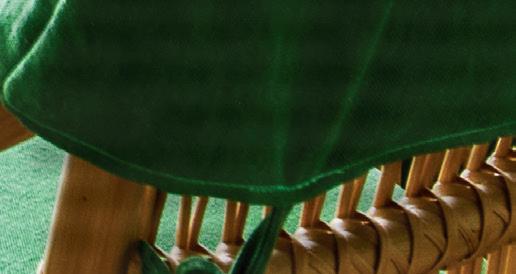






CLOCKWISE FROM ABOVE: “The living room is the pièce de résistance.” says designer Jonathan Adler. “Inspired by Billy Baldwin, we used Arbre de Matisse upholstery on the curtains and sofas, juxtaposed with a '70s Italian brassand-glass table. It’s an eclectic mix, but every piece in the room has one thing in common— they’re extra. Like Liz.”
• Liz relaxes in the sunroom in a caftan from her Figue fashion brand. • Mark Sikes designed the China hutch. The Arjumand’s World wall covering has an Asian feel that relates to the Ginori Oriente Italiano china pattern.

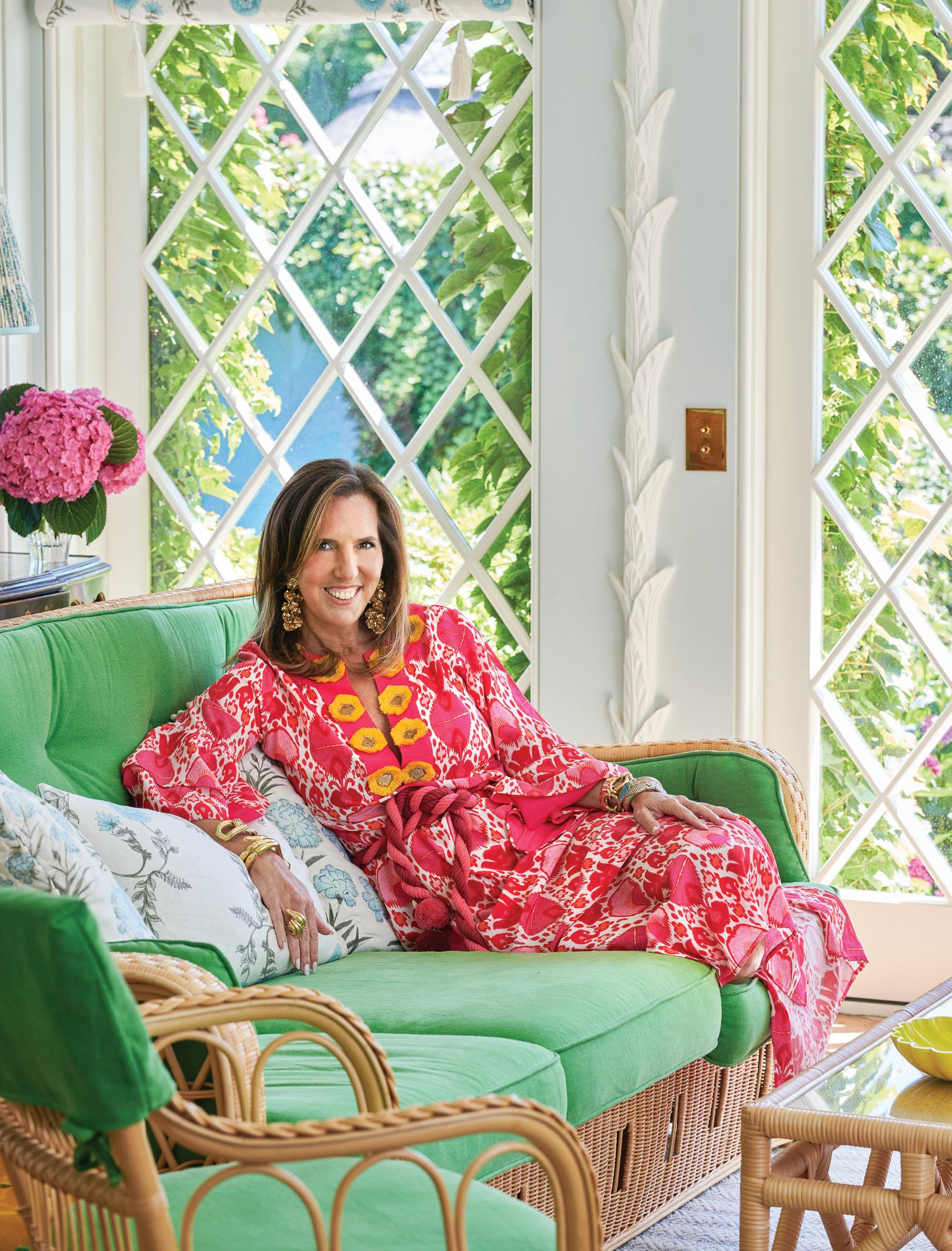
• A whimsical portrait by Helen Downing of “Little Edie” hangs in the entrance hall on a leopard-print wall covering—a subtle wink at the two Edies’ infamous cat obsession.
realtors trying to show her other bigger, newer houses on the beach while she batted them away with her knowing, confident “No, I want THIS one.”
The house could not have landed in better hands. A comparative literature major from Brown, Liz also had a penchant for fashion. Raised by a stylish mother on the Upper East Side of New York City, she developed a keen eye for chic. After college, she worked at Vogue and then apprenticed for a young designer. One day, while observing some of her contemporaries
dressed in unflattering, muumuu-type maternity wear, she decided to draw form-fitting yet flattering clothes for expectant women. The collection took off, and Liz Lange Maternity later sold for a tidy sum to a private equity group.
That instinct and imagination have been on display in Liz’s most recent, more bohemian, print-filled fashion venture, Figue. “I design for myself,” she says.
“In the 90s and early 2000s, there was a cleaner, somewhat urban aesthetic that fit my life. Now, I’m in a more resort-y
THIS PAGE: Blue is a recurring theme outdoors, from the garden gates to Liz's table linens on the East terrace. Munder-Skiles chaise longues, designed by Mark Sikes, accompany the round pool for a charming outdoor tableau. The pavilion beyond was drawn by architects Bories & Shearron. OPPOSITE: For a summer luncheon, Liz pulled linens from her own tabletop collection, just vibrant enough to hold their own in the dining room decorated by mid-century maestro Jonathan Adler. Rich turquoise silk on the walls contrasts with the modern white brackets that hold Vladimir Kanevsky porcelain flowers above the mantel. The porcelains were commissioned to mirror the garden flowers selected by landscape architect Deborah Nivens.



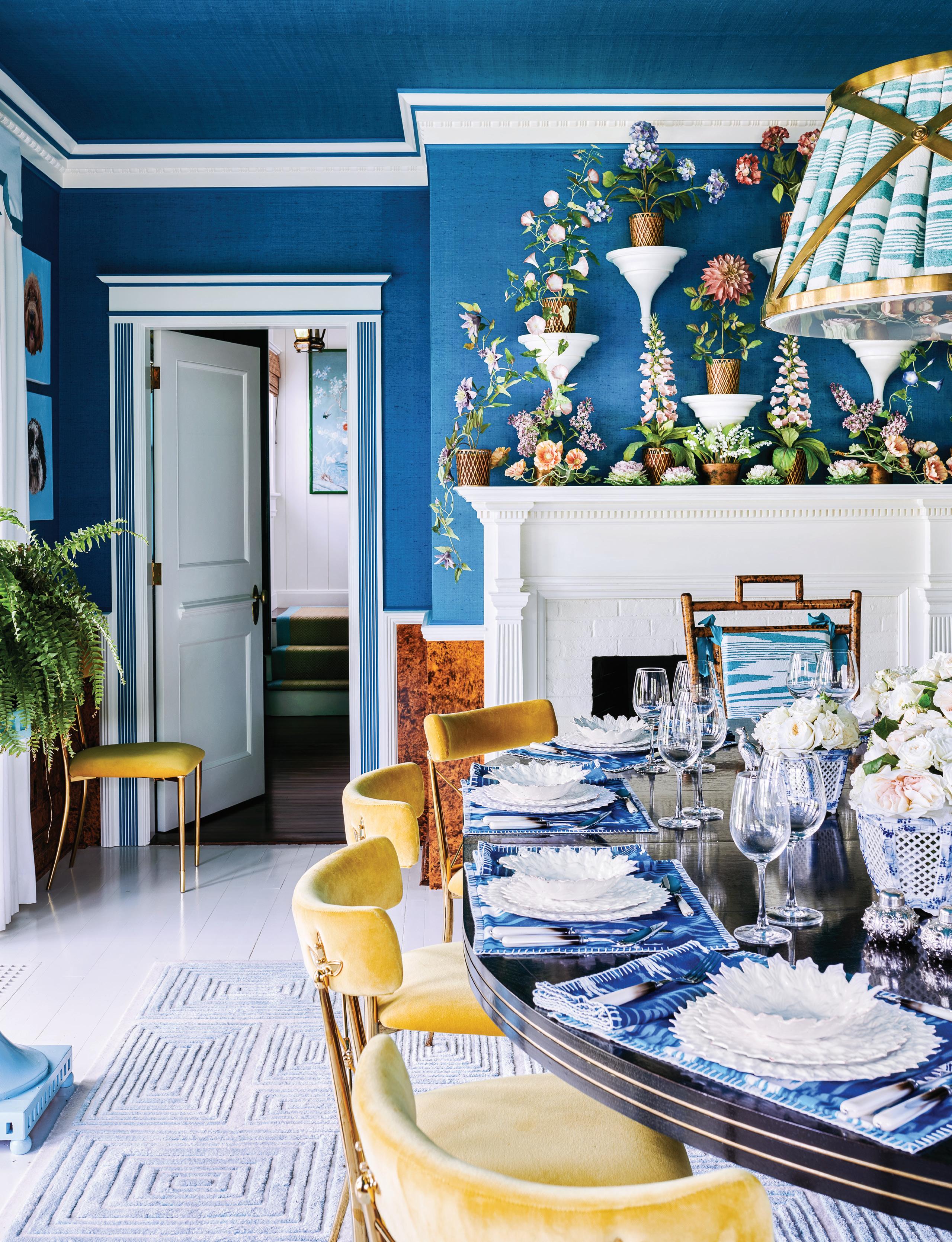
phase. I laughingly say that I’ve entered my caftan years.” She and everyone else.
This same bold vision has translated to the restoration and redecoration of Grey Gardens. Liz, though appreciative of the history and legend of her home, acknowledges that she also just loved the house itself. Having grown up going to “the country,” as the Hamptons were then dubbed in her world, she had a soulful connection to the neighborhood and was ecstatic to discover she could return and rehab a house that embodied everything she fondly remembered of that vernacular. “I spent my childhood just around the corner and knew the area like the back of my hand,” she says. “But several of the original, quintessential, shingle-style houses had been torn down, so I was so happy to see that Grey Gardens was still standing.”
When Liz took possession of the home, not much had been changed in the 40 years since Sally and Ben had renovated it. Armed with a sophisticated aesthetic and an enviable list of design and building contacts, she set about restoring and redecorating her new home. “I was a bit intimidated to begin with,” says Liz. “Lots of people have opinions and feelings about this house. It’s almost like a public museum, and I get that. But it’s also my house, so it’s been about the balance.”

She embarked on the project knowing she wanted to retain the architecture and feel of the original house. “No additions, no popping out of windows, etc. We watched the ‘Grey Gardens’ documentary over and over and would pause it and say, ‘Wait, what’s that behind her?’ We really tried to identify each fixture and picture. Our architect also knew many historical details, like the size of the diamond windows. The original ones were smaller and more expensive, but I wanted that, so that’s what we used.”
Having witnessed the successful restoration of the nearby Arts and Crafts manse, Lasata, the childhood summer home of Jackie Kennedy Onassis, Liz knew she wanted the same architects to help in her efforts. Ferguson & Shamamian were enlisted to handle the larger, more mechanical architectural duties, including adding an entire subterranean level. Architects Bories & Shearron then took on the more decorative architectural details, such as the plaster palms in the sunroom and the fantastical pool pavilion, among other elements.
An unabashed lover of color and glamour, Liz enlisted the help of potter and designer Jonathan Adler, a dear friend of hers, to reflect her personality in the public spaces. The
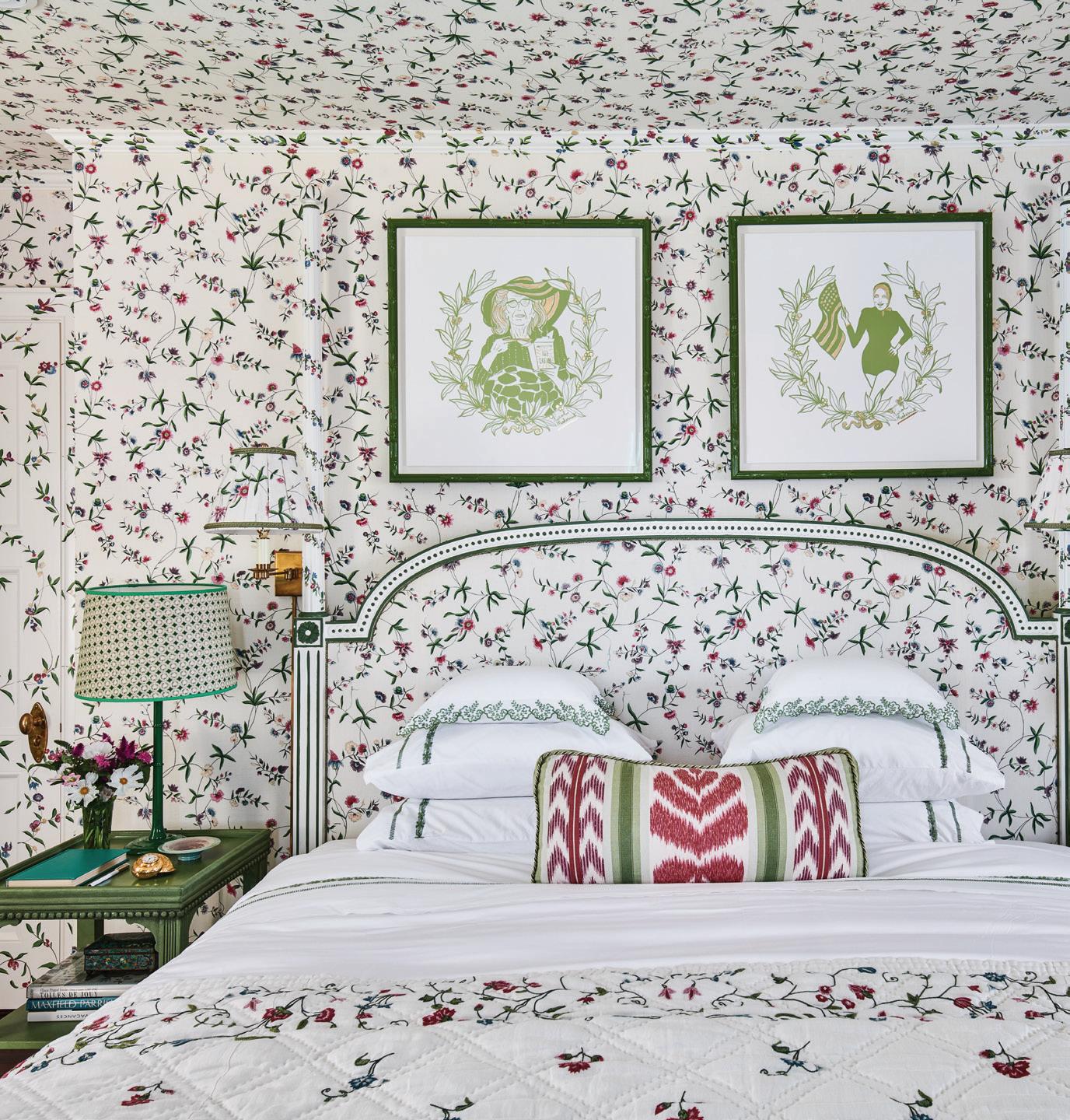
CLOCKWISE FROM TOP, FAR LEFT: Decorative painter Bob Christian conceived a trompe l’oeuil triumph by painting the doors, four-poster bed frame, and molding in a near facsimile of the Benison floral print on the headboard, bed linens, and ceiling in this guest room. Jason O’Malley captured the Edies in whimsical portraits over the bed. • Though grown, Liz’s children still have their own spaces when home. Son Gus’s room is an interplay of stripes and Provencal prints in shades of chocolate and cream. Walls are covered in Carolina Irving’s Patmos Stripe Reverse, windows are draped in Les Indiennes’ Helene, and the chair is covered in Burmese fabric by Sister Parish Design. The natural rush-andwood-frame bed from Hollywood at Home plays nicely with the vintage rattan furniture. • Liz’s bedroom is awash in blue flowers in a Colefax and Fowler fabric on the ceilings, walls, and windows, as well as in the Porthault blanket cover and the custom coverlet from Chelsea Editions. The poster bed came from John Rosselli. • Tucked away on the third floor is a cozy sitting room with a garden mural by decorative painter Bob Christian, an inviting striped sectional, an interesting Anglo-Indian armchair, and poufs perfect for board games or seating.
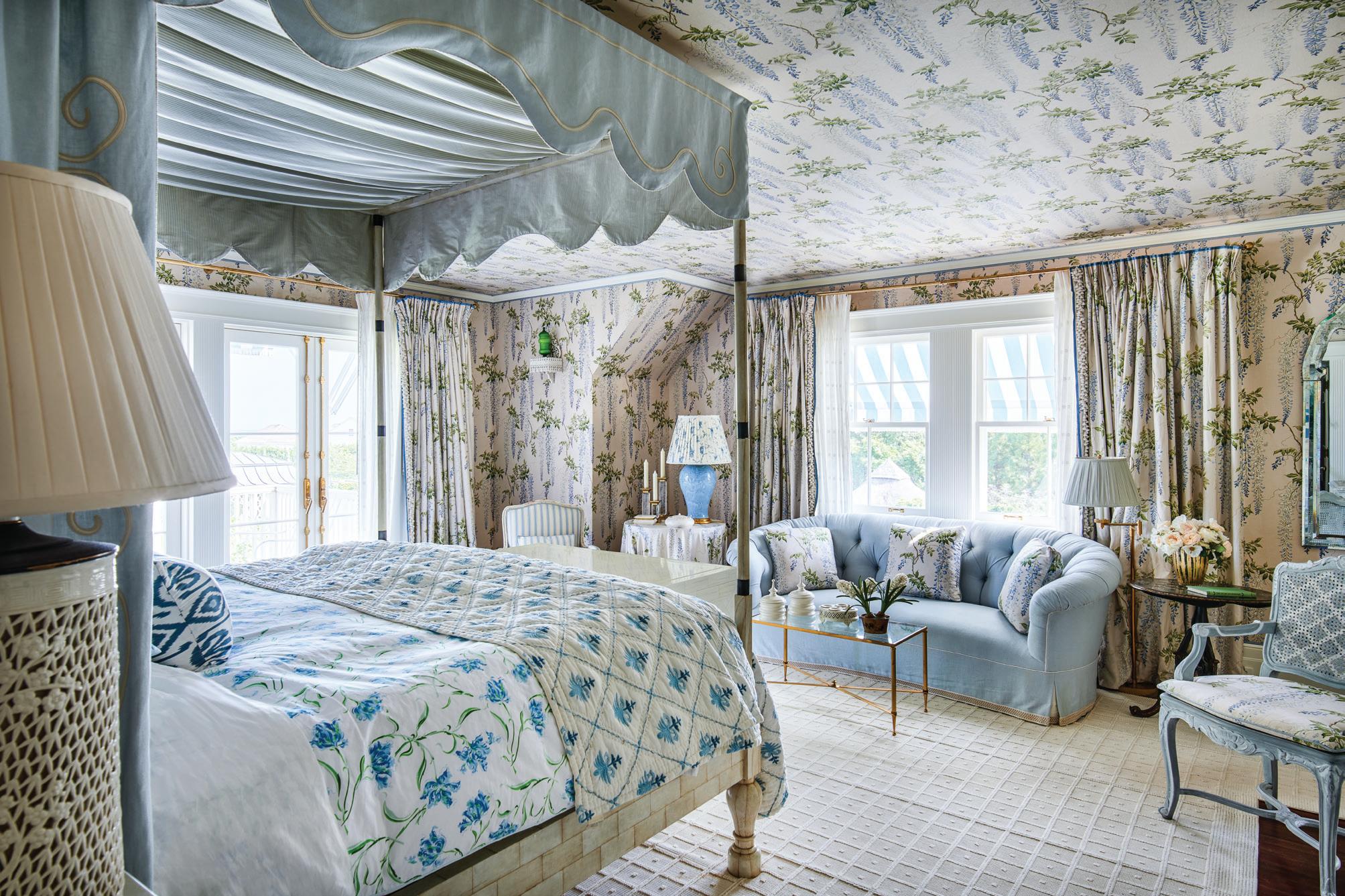
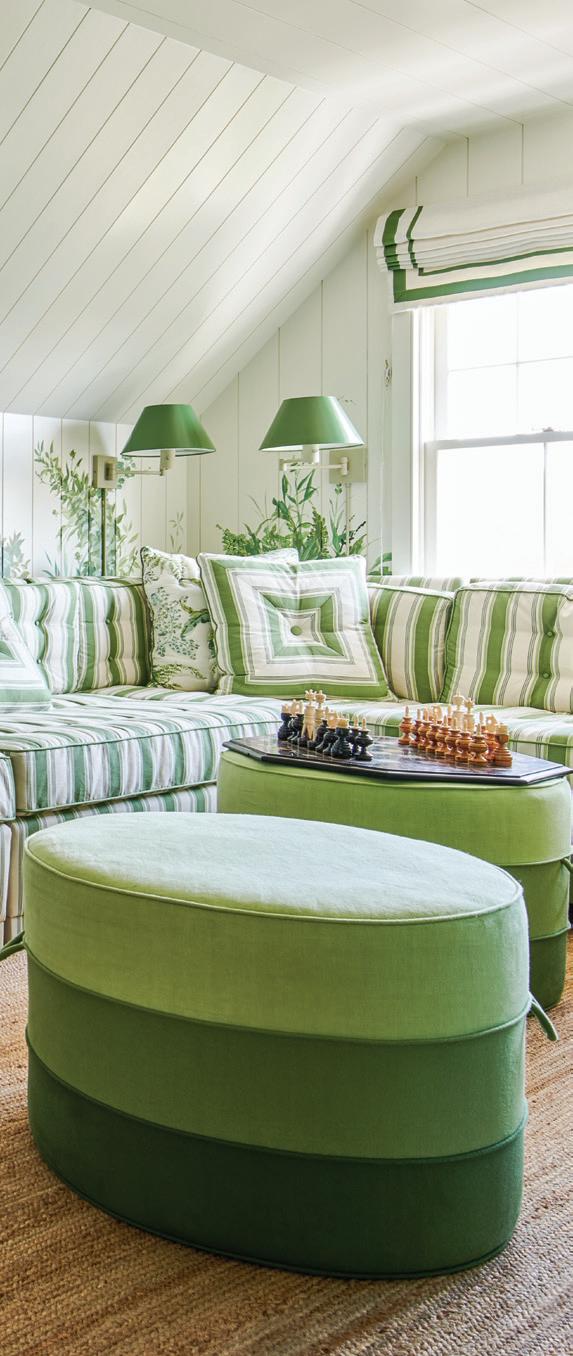

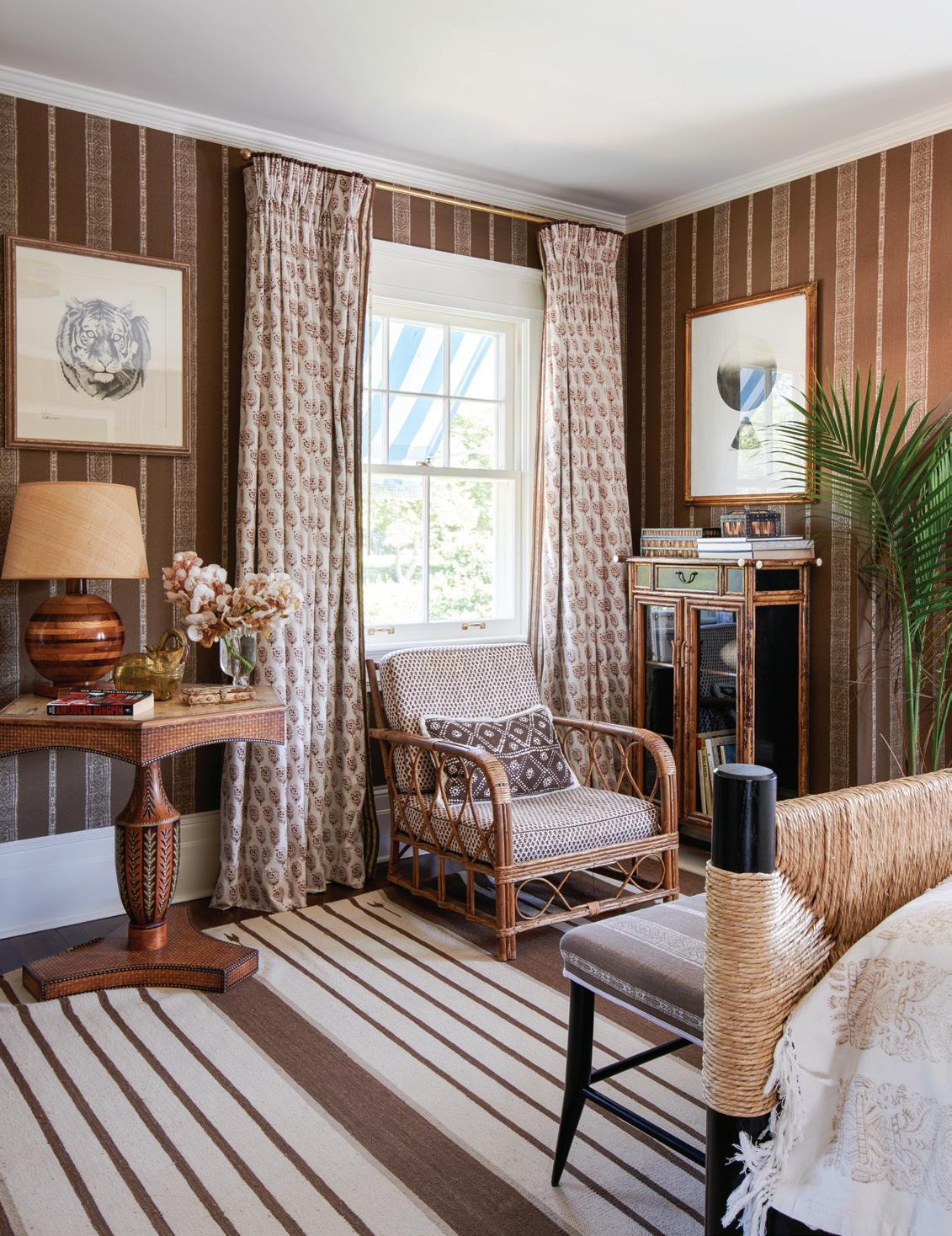
designer is known for his use of bold color, mid-century modern shapes, and graphic pattern. “He just gets me,” Liz says. “But I also really liked what Mark Sikes was doing. I hired him to decorate the bedrooms. I really wanted a few different voices that reflected my taste—not a one-designer interior. I wanted to have a big say in the overall look.”
To honor the home’s past, Liz did incorporate a few quirky artistic references to the Beales. And since Little Edie had once been a stylish beauty and a debutante, she wanted to acknowledge that with a nod to elegance.
Liz has always loved the sophisticated look of film producer Bob Evans’s round swimming pool, so she added one. Sikes then designed blue-and-white striped chaise longues to go along with it. He also envisioned jaunty stripes in the pool pavilion to further reflect Liz’s love of old Hollywood, and he engaged legendary decorative painter Bob Christian to paint the same stripes on the walls and ceiling for a tent-like effect.
With so much of summer in East Hampton

With so much of summer in East Hampton being lived out of doors, the design team considered the outside as much as the interior.Liz installed a grass tennis court, along with a crisp white treillage from Accents of France on the carport, to evoke the glamour and leisure that she dreamt of for the outdoors.

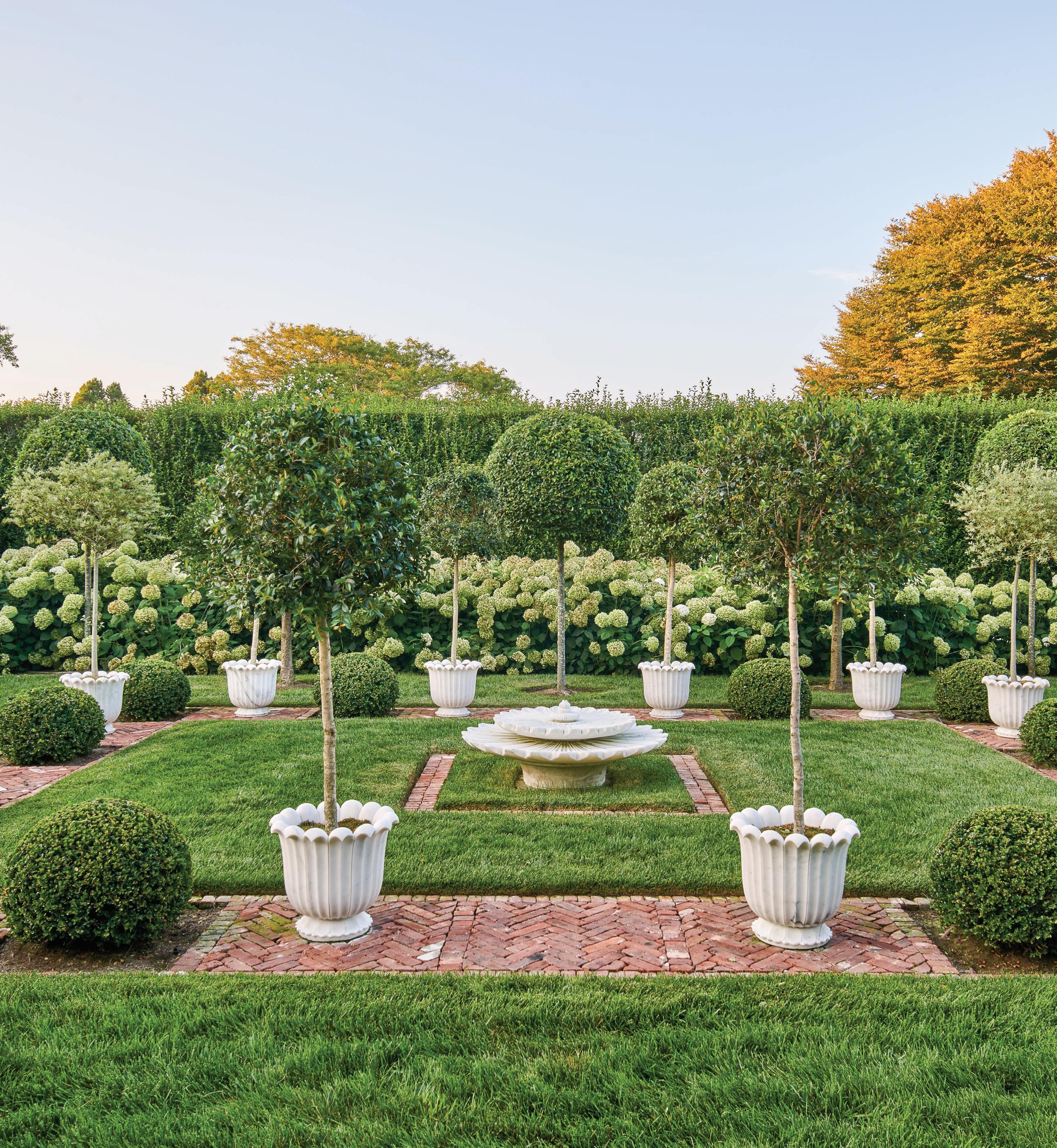
being lived out of doors, the design team also considered the outside as much as the interior—a hallmark of Sikes’s process. Liz shares, “I’m not a gardener, but it was important to me to honor the visions of Anna Gilman Hill and others who had lived here. At the same time, I wanted to incorporate my ideas of what I liked in the garden. We saved as many trees as possible, restored all the fountains, and even kept the little ancient gravestone for a dog named ‘Spot’ flush in the ground near a hedge.”
New York-based landscape architect Deborah Nevins worked with Liz to restore Hill’s pergola, walled garden, and thatched hut that had all grown a bit tired over the years. She also laid out an extensive kitchen garden and an overall wilder English-style garden, both inspired by Liz’s visit to Babington House in England, as well as her particular fondness for Vita Sackville-West’s Sissinghurst gardens. But the new chapter in the garden story is the Indian Garden on the east side of the house just off the dining room.
A consummate and enthusiastic hostess, Liz wanted the vista beyond the dining room to be interesting and a bit exotic. The design decision was inspired by a pair of Maya blue, vintage, Indian palace doors discovered at John Derian. “We decided to place them at the entrance to the future Indian Garden at the end of the Linden Walk,” says Liz. “Debby (Nevins) knew of a company in India that could fabricate the white marble planters, fountain, and furniture that we thought would pair beautifully with the doors, so we commissioned them.” The pieces are dramatic and unexpected for East Hampton, yet they work and even seem to reflect Liz’s recent foray into fashions with a more international profile.
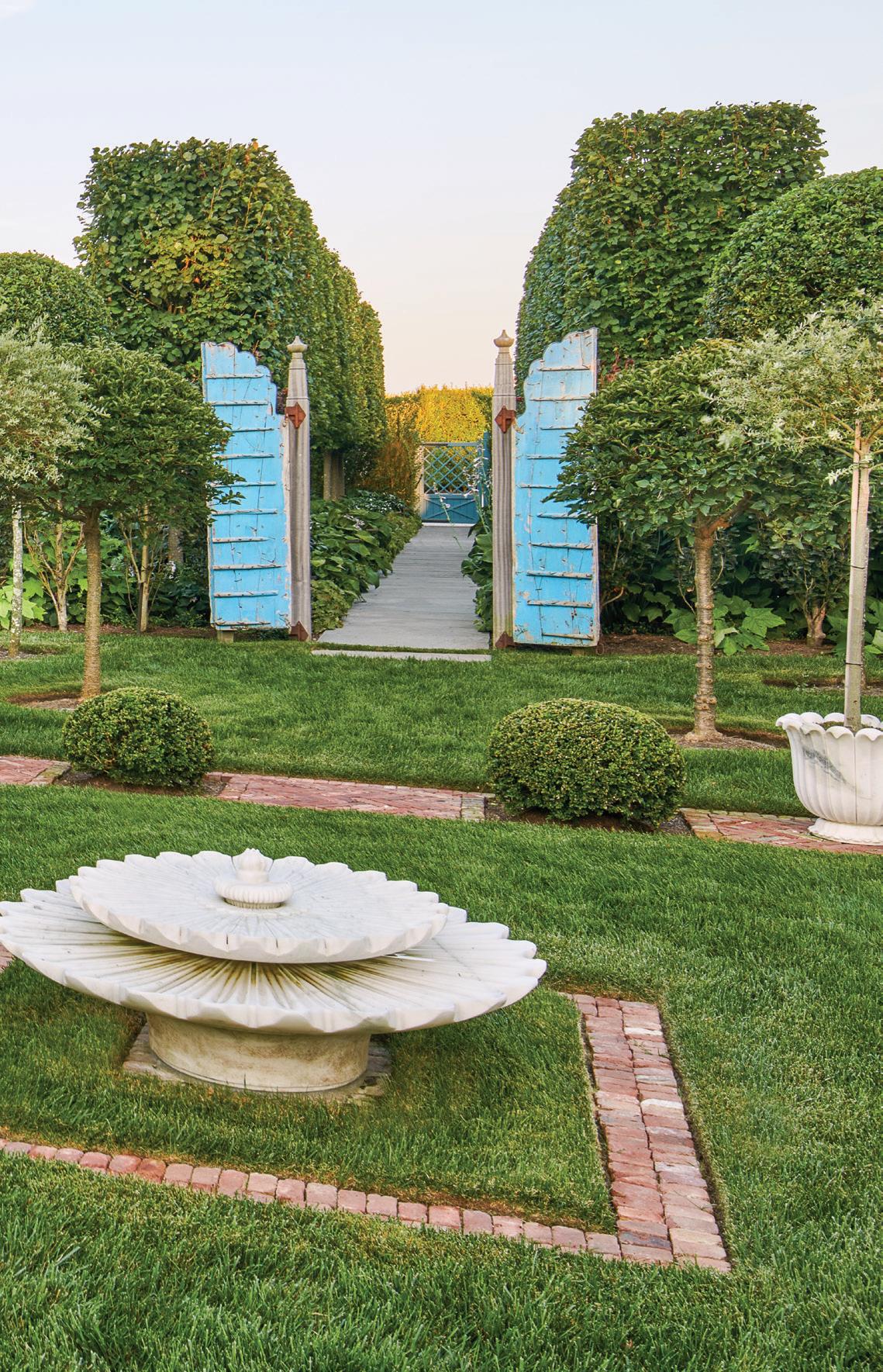
Another voice Liz incorporates into her design scheme is that of the Bridgehampton florist Michael Grim. Having known Liz for years, starting with when he graced Liz’s childhood home with flowers for her mother, Michael understands and interprets her floral preferences beautifully. “Liz loves garden flowers and is never afraid of color,” he says. This unfussy attitude is representative of Liz’s overall ethos. “I don’t take myself—or my homes—too seriously,” she says. “I’m mostly barefoot, but that’s ‘cause I’m feral. People walk in and say, ‘Oh my, should I take off my shoes?’ And I always respond, ‘Only if you want to.’ ” One might imagine the Edies somewhere nodding in approval.

Wearable art made from precious metals and stones reflects the diverse colors and compositions of some of the world’s great gardens.
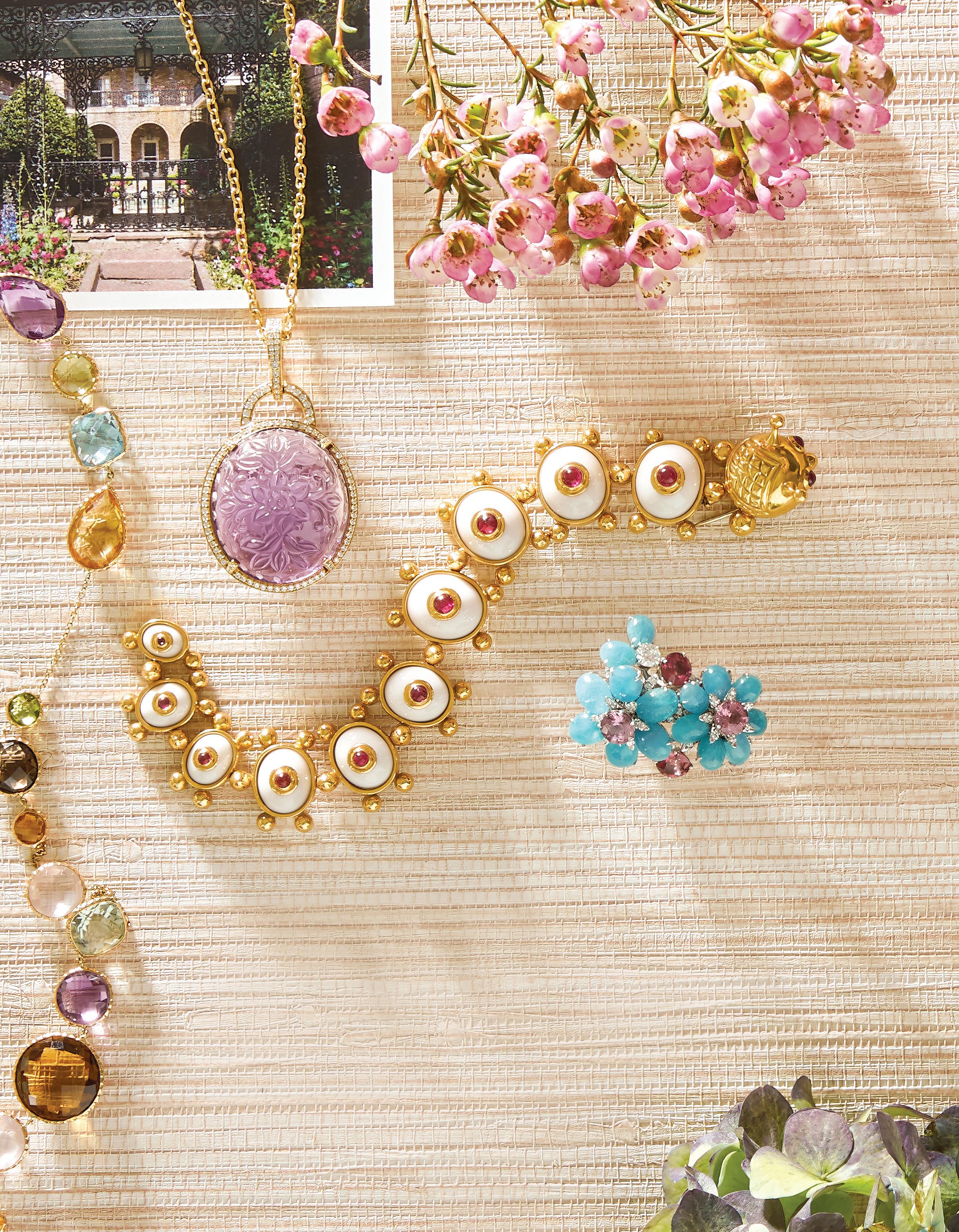
Produced by MARGARET ZAINEY ROUX AND MERCY LLOYD
Styled by MARGARET ZAINEY ROUX AND SUTTON WARD
Photography by DAVID HILLEGAS

Reflective of the flora that blooms year-round at Bellingrath Gardens in Mobile, Alabama, these timeless adornments epitomize Southern chic. Their pastel palettes and feminine forms recall the camellias, azaleas, irises, and hydrangeas that grace the property’s 900 acres. The estate, originally known as “Belle Camp,” was intended as a fishing camp for Walter Bellingrath, one of the first Coca-Cola bottlers in the Southeast. The transformation from private retreat to public garden is due to the efforts of Bellingrath’s wife, Bessie, who began developing the grounds with architect George Bigelow Rogers in the late 1920s.
Multi-color topaz necklace in 14K yellow gold ($3,550) from Bromberg’s; brombergs.com • Amethyst carved pendant with diamonds in 18K yellow gold with oval Rolo chain in 18K yellow gold (price upon request) from Goshwara; goshwara.com
• Eva Legoura 18K gold articulated ceramic and ruby centipede brooch ($5,900) from Tenenbaum Jewelers; tenenbaumjewelers.com • Paraiba flower ring in platinum (price upon request) from Goshwara; goshwara.com • Opal butterfly necklace with diamonds in 18K yellow gold ($7,800) from Bromberg’s; brombergs.com • Pink sapphire and diamond ring in 18K white and rose gold ($57,000) from Bromberg’s; brombergs.com • Enchanted Garden flower cluster band ring in 18K green gold with diamonds ($2,530) from Penny Preville; pennypreville.com • Backdrop: Normandy Grass Cloth in “Blush” from Thibaut; thibautdesign.com
From butterflies and koi fish to pagodas and lotus flowers, these jewels express the spirit and symbolism of ancient Asian cultures as seen at Tenryū-ji Temple near Kyoto, Japan. Erected in 1339 in memory of Emperor Go-Daigo, the temple was officially consecrated in 1345 and has been designated first among Kyoto’s “Five Mountains,” the city’s five major Zen temples. The grounds surrounding Tenryū-ji feature some of Japan’s most important gardens, including Hyakka’en, the Garden of a Hundred Flowers. While other gardens on the site date as far back as 700 years, Hyakka’en is a mere 40 years old yet overflows with flowering trees, bushes, and herbs.
FROM LEFT TO RIGHT:
Gold, white topaz, ruby, emerald, and amethyst Lotus ring ($15,500) from Belperron; belperron.com • Onyx and multi-colored jade necklace ($750) from Rex Harris Fine Jewelry; 205.871.3333 • 19th-century antique porcelain button Pagodas pendant ($4,100) from Elizabeth Locke; elizabethlocke.com • Pink tourmaline, pink chalcedony, and white sapphire earrings, ($1,095) from Rex Harris Fine Jewelry; 205.871.3333 • Vintage 1980s David Webb 18K gold koi fish necklace ($26,800) from Tenenbaum Jewelers; tenenbaumjewelers.com • Goshwara flower-shape carved jade earrings with diamonds in 18K white gold (price upon request) from Goshwara; goshwara.com • Backdrop: Normandy Grass Cloth in “Spa Blue” from Thibaut; thibautdesign.com


Gold and silver pieces embellished with brilliant gemstones exude the opulence of the Gardens of Versailles. In the late 1660s, Louis XIV commissioned renowned French landscape architect André Le Nôtre to execute his vision for the grand palace and gardens that would one day reign among the country’s crown jewels with nearly 6 million visitors each year. Emerald-green lawns and meticulously manicured parterres feature groves and gardens brimming with daffodils, primrose, jasmine, and narcissus.
FROM LEFT TO RIGHT:
18K yellow gold Criss Cross cuff ($21,500) from Verdura; verdura. com • Opera Tulle ring in 18K yellow gold with green enamel ($3,400) from Buccellati; buccellati.com • Enchanted Garden single row flower eternity band in 18K green gold with diamonds ($4,645) from Penny Preville; pennypreville. com • Opera Tulle necklace in white gold set with diamonds ($16,500) from Buccellati; buccellati.com • Gumuchian Secret Garden 18K gold outline Illusion diamond ring ($6,600) from Gumuchian; gumuchian. com • Goshwara pear shape opal cabochon and peridot flower stud earrings in 18K yellow gold (price upon request) from Goshwara; goshwara.com • Backdrop: Normandy Grass Cloth in “Willow” from Thibaut; thibautdesign.com

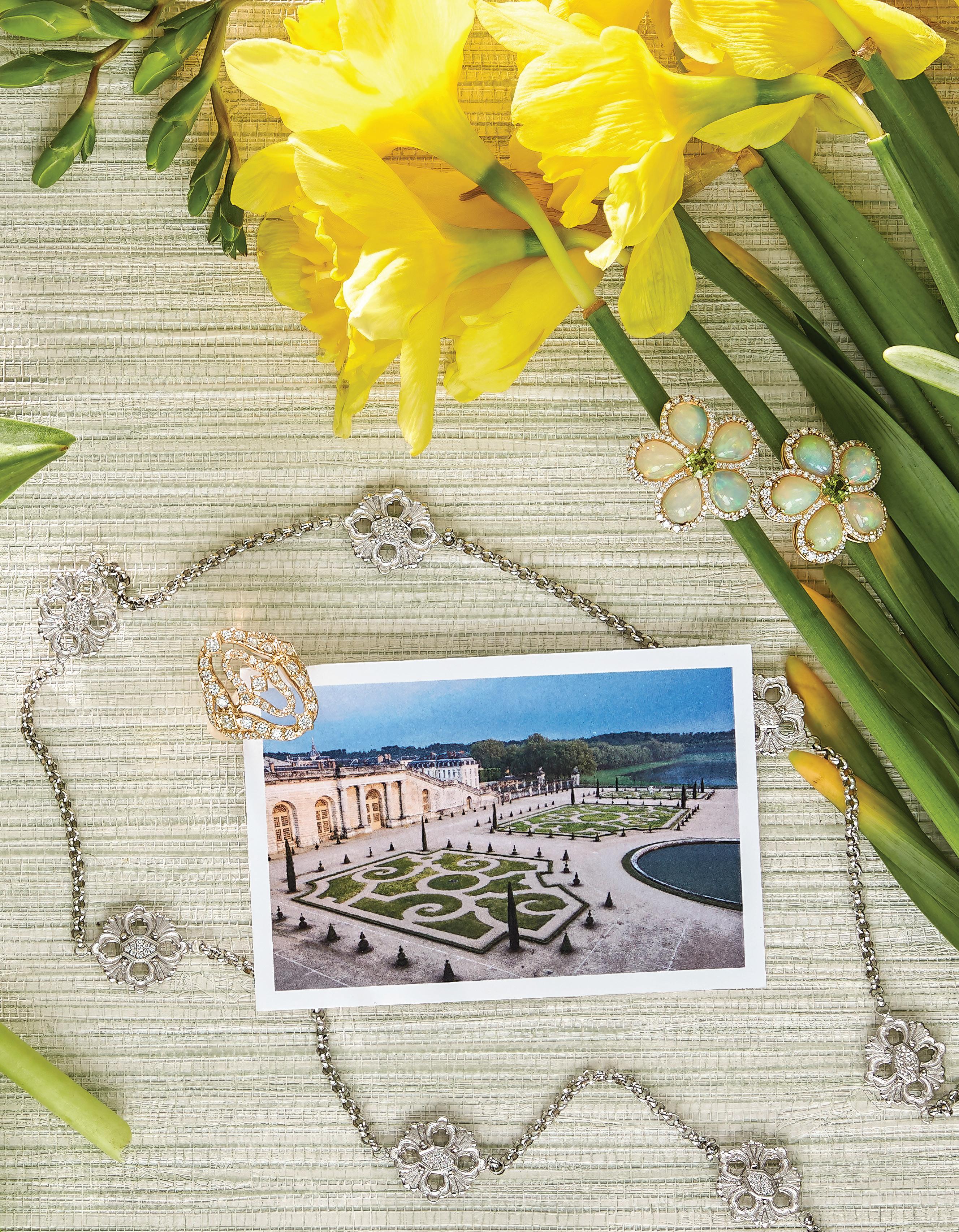
Heavy metals, honed stone, and fine gems in sun-scorched hues emulate the rugged beauty of Desert Botanical Garden in Phoenix, Arizona. Sprawled across 55 acres near the dunes of the Sonoran Desert, the awe-inspiring oasis is home to 50,000 plants, including prickly cacti, velvety succulents, and whimsical wildflowers. Founded in 1930, the garden began as a labor of love by a group of local conservationists who rallied and formed the Arizona Cactus and Native Flora Society. By the end of the decade, they had established Desert Botanical Garden as a nonprofit museum dedicated to the preservation and display of desert plants.
CLOCKWISE FROM TOP LEFT: Bellariva chain in 19K gold with hammered finish ($11,100) from Elizabeth Locke; elizabethlocke. com • Elizabeth Locke small Sleeping Beauty turquoise and pearl Maltese cross ($5,100) from Elizabeth Locke; elizabethlocke. com • Flat diamond earrings in 18K white and rose gold with engraving ($20,500) from Bromberg’s; brombergs.com • Bulgari Tubogas bracelet in 18K rose, yellow, and white gold ($8,950) from Tenenbaum
Jewelers; tenenbaumjewelers.com
• Important Breguet 18K gold Bague L’Orangerie flower ring with rubies and diamonds ($32,500) from Tenenbaum
Jewelers; tenenbaumjewelers.com
• Tiger-eye necklace with vermeil catch ($350) from Rex Harris Fine Jewelry; 205.871.3333 • Virgin gold Wave ring ($7,500) from Belperron; belperron.com • Virgin gray gold Wave ring ($6,500) from Belperron; belperron.com • Backdrop: Normandy Grass Cloth in “Straw” from Thibaut; thibautdesign.com


Interior designer Lindsey Herod let floral textiles lead the way for the design scheme of her clients’ Houston home.
By MARGARET ZAINEY ROUX
Photography by KERRY
KIRK“It all started with the leafy green on the Jean Monro chintz pillow,” Lindsey says of the wall color, Sherwin-Williams Livable Green. The high-gloss hue lightens the load of the family’s black baby grand piano and complements the pastel pinks on the tu et and chair upholstery. For a pair of vintage Gracie panels, the designer drew on their Chinoiserie motif to select gilt bamboo frames.
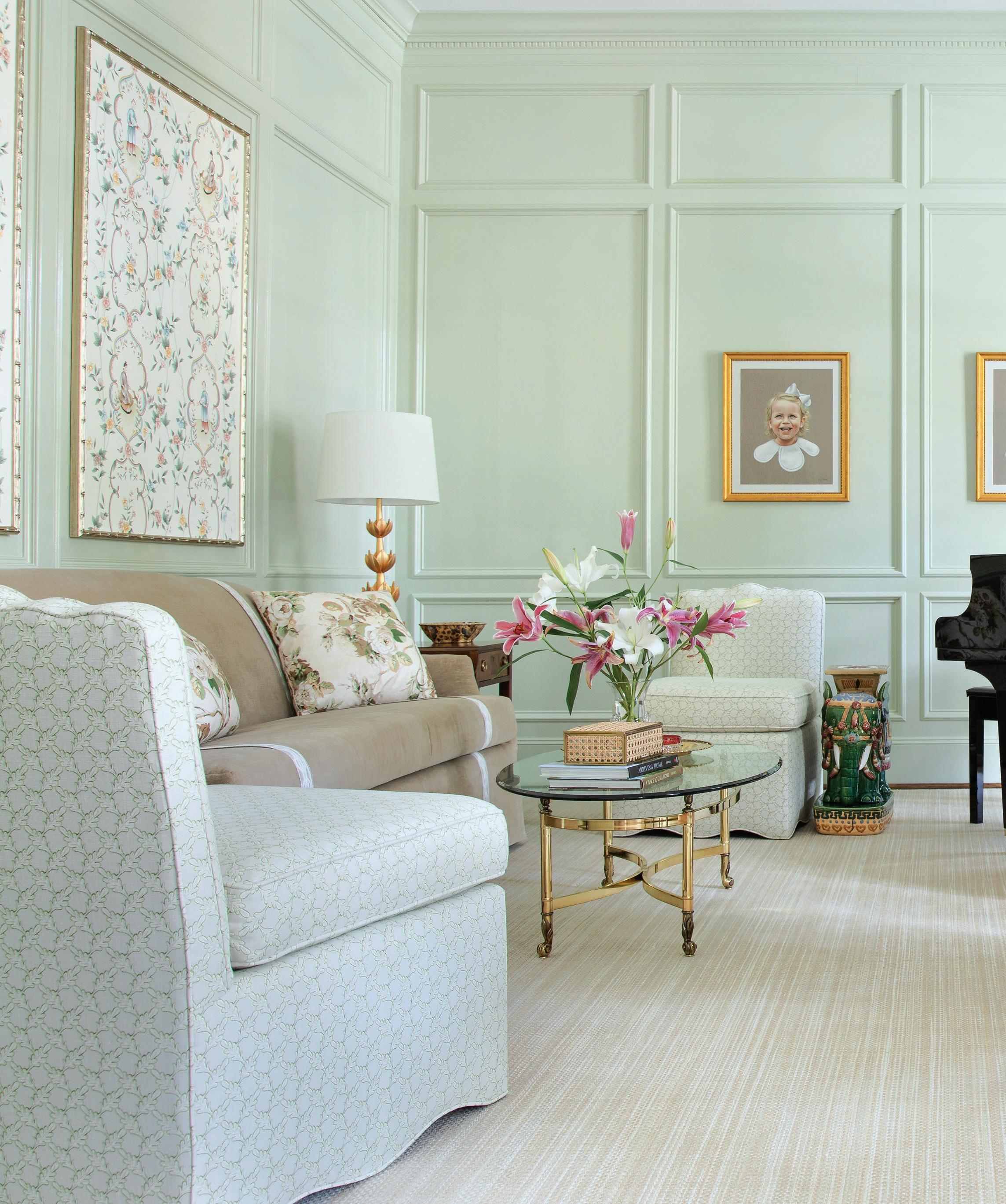


Lindsey Herod has never met a floral that she didn’t like. In fact, the interior designer and self-described “fabric addict” cannot think of a room scheme that didn’t sprout from a chintz, cabbage rose, or other botanical motif—or all three, for that matter. “I’d rather be in the garden than anywhere else so I’m constantly drawn to natural colors, materials, and textures that convey an alfresco feeling,” Lindsey says. “Leafy greens and sky blues, wickers and rattans, and crisp cottons and linens are my go-tos—and, of course, tons of floral prints. As I see it, there is no such thing as too many flowers in a garden, so there is no such thing as too many floral prints in a home.”

The 30-something-year-old design guru learned to master mix from
one of the best in the business, interior designer Celerie Kemble. After spending seven years in Celerie’s New York office, Lindsey returned to her hometown of Houston in 2012 where she has since made a name for herself creating spaces that are maximal yet decidedly modern. Like her, Lindsey’s clients are among a new generation of traditionalists who embrace elegance and formality as long as it’s practical, authentic, and conducive to contemporary living. “There is no correlation between age and architectural style,” says the designer. “I have several young clients who appreciate classic features like paneling, molding, and ceiling medallions because of the character they bring to a home. Many of them grew up in older houses and find comfort in their familiarity, so I strive to re-create that in a way that is more current.”
That was the case for one such client, an active family of five who was building in the city’s Memorial neighborhood. Early in the process, the homeowners called on Lindsey to deliver rich architectural details that would set the framework for rooms with a timeless yet fresh aesthetic. Enlisting her “fabric first” strategy, the designer sourced piles of prints, mainly floral, as the inspirations for design schemes that provide a

OPPOSITE, LEFT TO RIGHT: A leafy treetop wallcovering in ethereal blues connects the mudroom, office, and laundry to create a single, hardworking corridor that feels more like an enchanted forest. • Lindsey elevated the simple two-tone skirted console in the entry with graduated bands of coral grosgrain ribbon. A vintage La Barge eglomise mirror hangs above the custom design that is framed by the homeowners’ collection of Rose Medallion plates. ABOVE: “Silk would have been too predictable for a formal dining room, so I chose white linen,” Lindsey says of the draperies trimmed in a wide Samuel & Sons embroidered tape. The opulence of the chinoiserie-inspired wallcovering, vintage gold leaf mirror, and 1920s crystal Italian chandelier is tempered by the clean profile of the vintage mahogany pedestal table and chalky white chairs backed in a casual buffalo check.

For Lindsey Herod, good design starts with great fabrics. The interior designer explains that mastering the mix is as easy as one, two, three.


If starting with a complex, multi-colored primary pattern, source complimentary solids, textures, or simple two-tone fabrics featuring a color or two extracted from the primary pattern.
Take the touch test to score fabrics that not only look luxe but also feel luxe. A blend of nubby linens, fuzzy velvets, waxed cottons, and smooth silks can really up the ante on style when working with solids.
When piling on the prints, be mindful of scale. Large prints read best when they are offset by smaller ones and vice versa. For instance, pair big blooms with thin pinstripes, dainty polka dots, or tiny ginghams or geometrics. Empower baby buds by presenting them with wide cabana stripes, boxy buffalo checks, or an oversized block print.
ABOVE: “The design concept of the entire house started with the idea of bringing the garden inside, and that’s most evident in the living room and kitchen,” says Lindsey. “Its expansive footprint is like an open field where different textures, materials, prints, and colors, ‘grow’ among one another just as nature intended.” LEFT: Cane-paneled cabinet fronts draw the eye to the range hood as a dramatic focal point in the all-white kitchen.
OPPOSITE, TOP TO BOTTOM: An antique commode topped in quartzite was converted into a vanity in the powder room. The rich finish of its inlaid design grounds the crisp green-andwhite Scalamandre parterre pattern wall covering. A modern mirror with goldleaf edges references the Louis Philippe style. • The custom pelmet and bed curtains encase the plush upholstered headboard and wrap the lofty primary suite in coziness. Instead of traditional nightstands, a pair of fruitwood commodes flank the bed to better suit the room’s scale.
cohesive, thoughtful flow throughout the interiors.
In the living room, plush linen pillows with a wide repeat of big blooms balance the smaller scale prints and solids on the seating and windows. The blues, greens, and taupes in the pillows permeate throughout the space and into the adjacent kitchen that features custom pleated pendant shades made from an imported hand-blocked floral textile. Just off the kitchen, the mudroom, office, and laundry room are all wrapped in a statement-making treetop print, while the dining room features a delicate floral wallcovering that speaks in more of a whisper.
In addition to mixing prints and colors, Lindsey mingled styles and provenances for intrigue. She placed casual cane shades on the scrolly bronze arms of a vintage chandelier in the breakfast room and paired a sleek acrylic game table with a set of patinaed antique French chairs in the music room. In the primary bedroom, timeworn pieces of Chinese export porcelain are displayed on sleek Lucite corbels.

“My clients plan to be in this home for a while, so we took our time choosing furniture and décor that would age gracefully,” Lindsey says. “They didn’t want everything to look too perfect or like it was straight off the showroom floor. By marrying elements that are high and low, dainty and daring, and polished and patinaed, we created a design that is truly unique. To put it in gardening terms, it feels very organic.”

Designers of every genre are migrating south to this burgeoning mecca of talent and style.
 By MARION LAFFEY FOX
By MARION LAFFEY FOX

When Melanie and Chris Hill arrived in Palm Beach to visit his grandparents in 1985, the couple anticipated an antiques shopping bonanza to help fill their shop in Tuscola, Illinois. Instead, they bought a business, Kofski Antiques, and relocated to Florida. By the late ‘80s, the Hills had taken the business to another level. They owned five warehouses and employed 60 sales staff, staging eight major estate sales a year that magnetized interior and landscape designers, as well as bargain-hunting homeowners. Waiting lines formed at 5 a.m. for the 9 o’clock opening.
Carleton Varney also established his lemon-yellow Dorothy Draper showroom in the area, and it continues to showcase his legacy. And years ago, Devonshire, the antique English garden shop, found its niche selling exotic decorative items that co-owners Nelson Hammell and Pete Hawkins cull from worldwide travels. Today, the semi-gritty thoroughfare—dominated by metal Quonset huts, auto-body shops, rug-cleaning facilities, and countless basic service enterprises, and interspersed with a few stone statuary warehouses, ironworks, and a rattan furniture repair shop—is rapidly gentrifying. Georgia Avenue and other pockets of West Palm Beach, as well as tony Palm Beach itself, are welcoming a raft of new talent that is invigorating its already heady persona.
Among the enthusiastic group, designer Meg Braff is a vibrant newcomer to Georgia Avenue. The Tupelo, Mississippi, native, a graduate of Vanderbilt University and Parsons School of Design
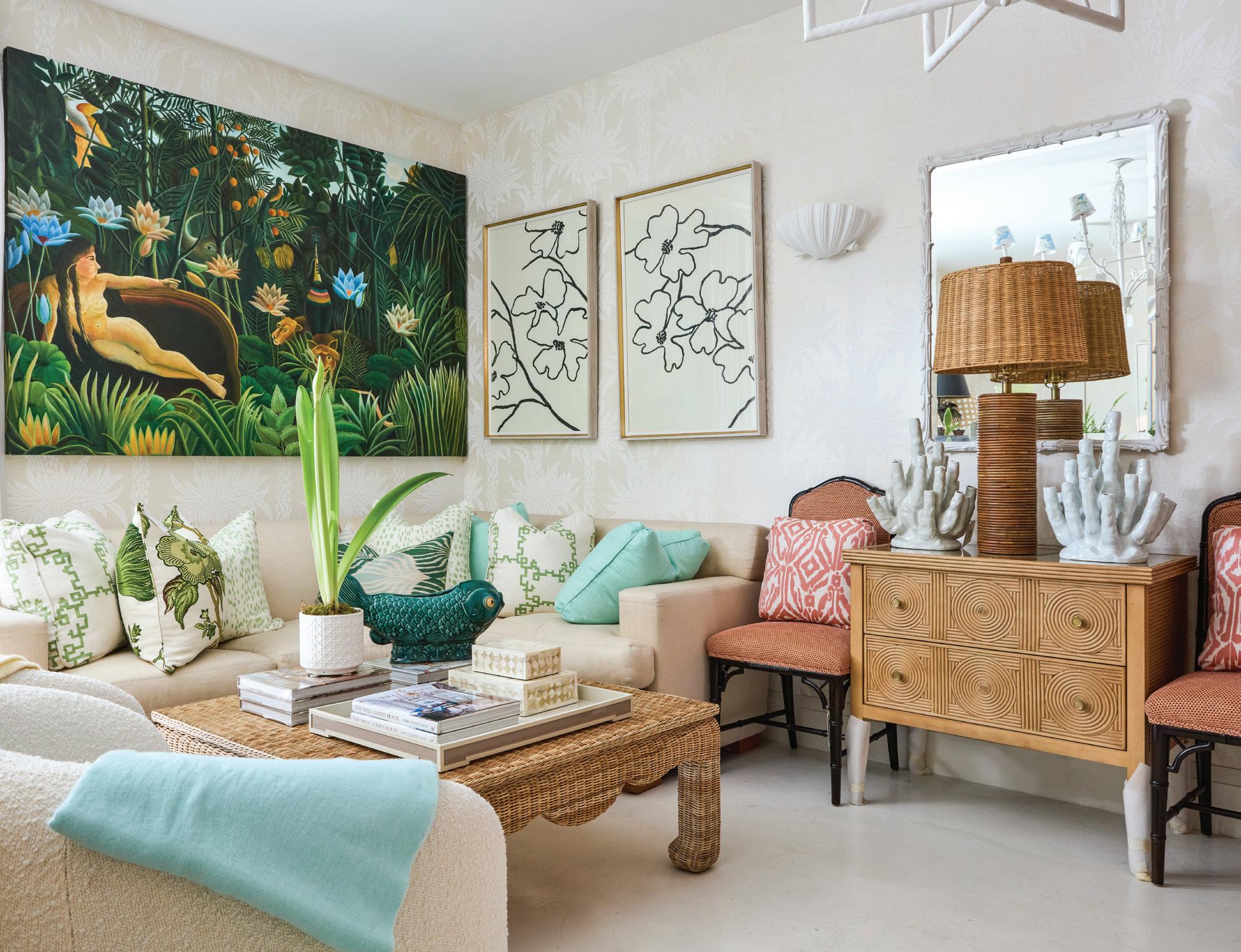
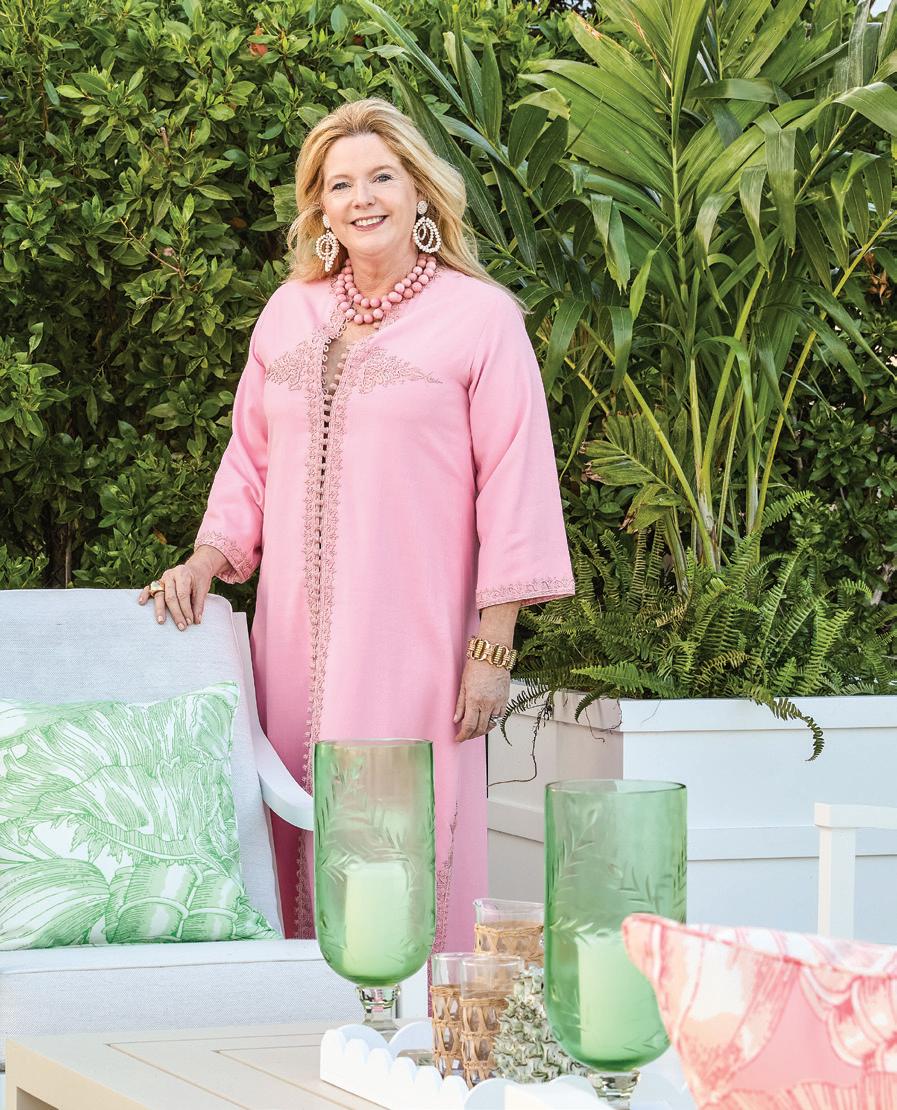
PREVIOUS PAGES:
The exterior of Meg Braff Designs, with its haute Regency lines, anchored by tall double doors, a broken pediment, and brass carriage lights, enlivens a once-dreary corner THIS PAGE, TOP TO BOTTOM:
Meg stands in her garden-event space behind her shop. The McKinnon and Harris outdoor furniture is covered in her outdoor fabric, “Pistachio and Snowpea” from the Nassau line. • Inside Meg’s shop, vignettes are replete with artwork, including two Susan Hable prints and “The Dream,” a monumental, unsigned Rousseaulike canvas. “Inside and out, the showroom is both playful and livable,” Meg says.
who is known for her “signature take on traditional glamour,” is proudly ensconced in the old Epco Inc. and Dixie Blueprinting building across the street from the Authentic Provence showroom. In a nod to Meg’s innate flair, the mint-green-and-white Regency, one-story building beckons potential clients with its rooftop urns, Bermuda-shuttered windows, and grass-inlaid walkway. “I bought it during COVID in the summer of 2020,” she says. “It was a shabby building that clearly had to be gutted. We reimagined a parking lot out back into a garden and event space, and we also purchased a small house and cottage for staff who travel from my Locust Valley location.” Explaining that the move was “an easy transition,” Meg says her lively business ranges from “great apartments to lovely houses, as well as lots of ‘away’ projects in the Caribbean and all over the U.S.”
Next door, Danielle Rollins credits Meg for finding the low-slung building she purchased in August 2022. “She called to tell me the ‘60s building that was home to a tile company, upholsterer, piano repair shop, and cobbler was for sale, and that I had to buy it,” Danielle says. “Opening a shop was my longtime dream. After building a profitable business and writing two books, this was the next step.” The designer says that she always pictured herself in Palm Beach. “It’s an exciting, dynamic, marvelous time to be here. I love creating an environment in my shop that’s both pretty and comfortable. I carry great hostess gifts, as well as unique finds in the form of collectible furniture, tabletop, and art.”

Approximately eight blocks down Georgia Avenue, the former Kofski property has morphed into a glistening white space for Renny & Reed,
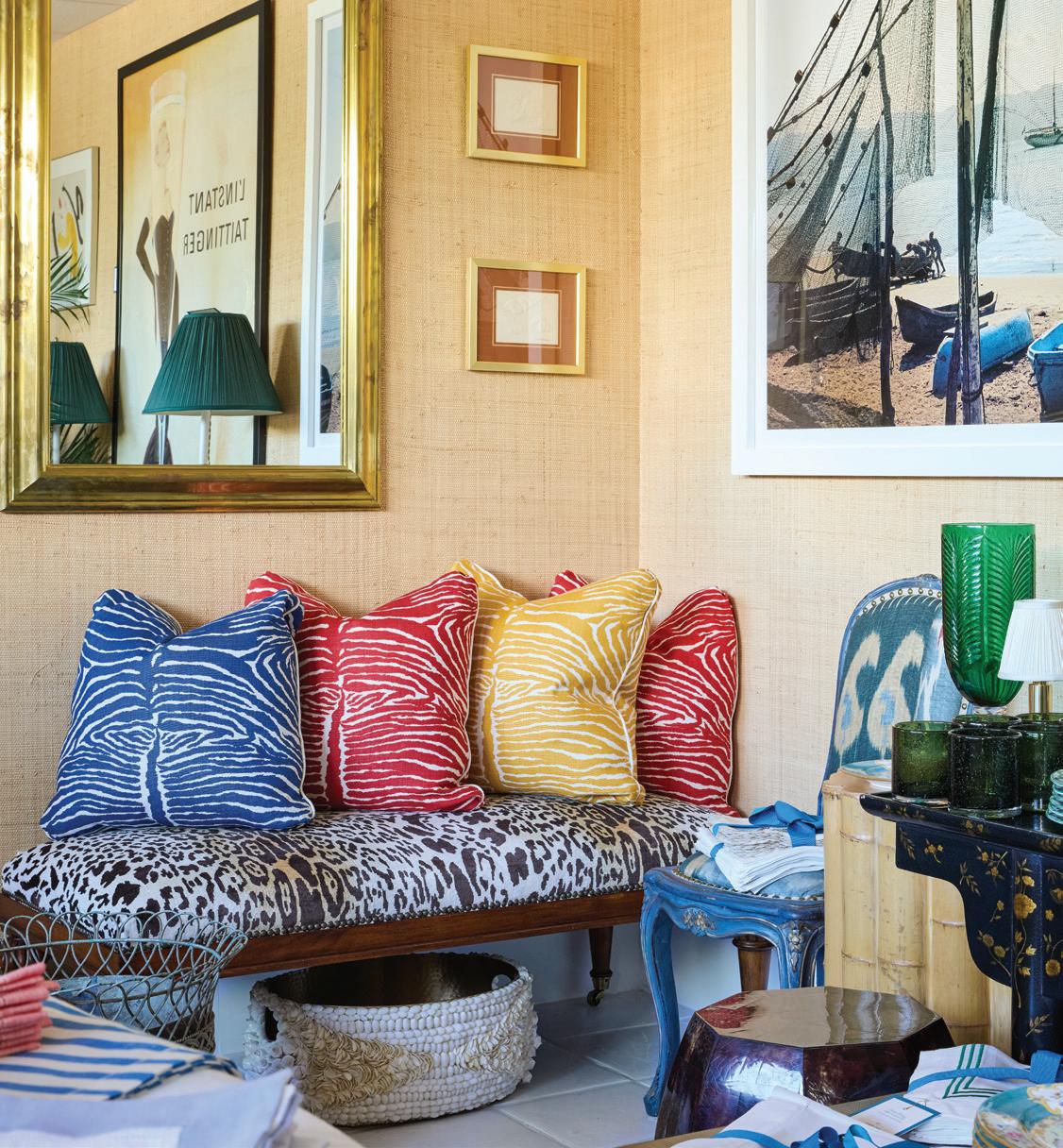
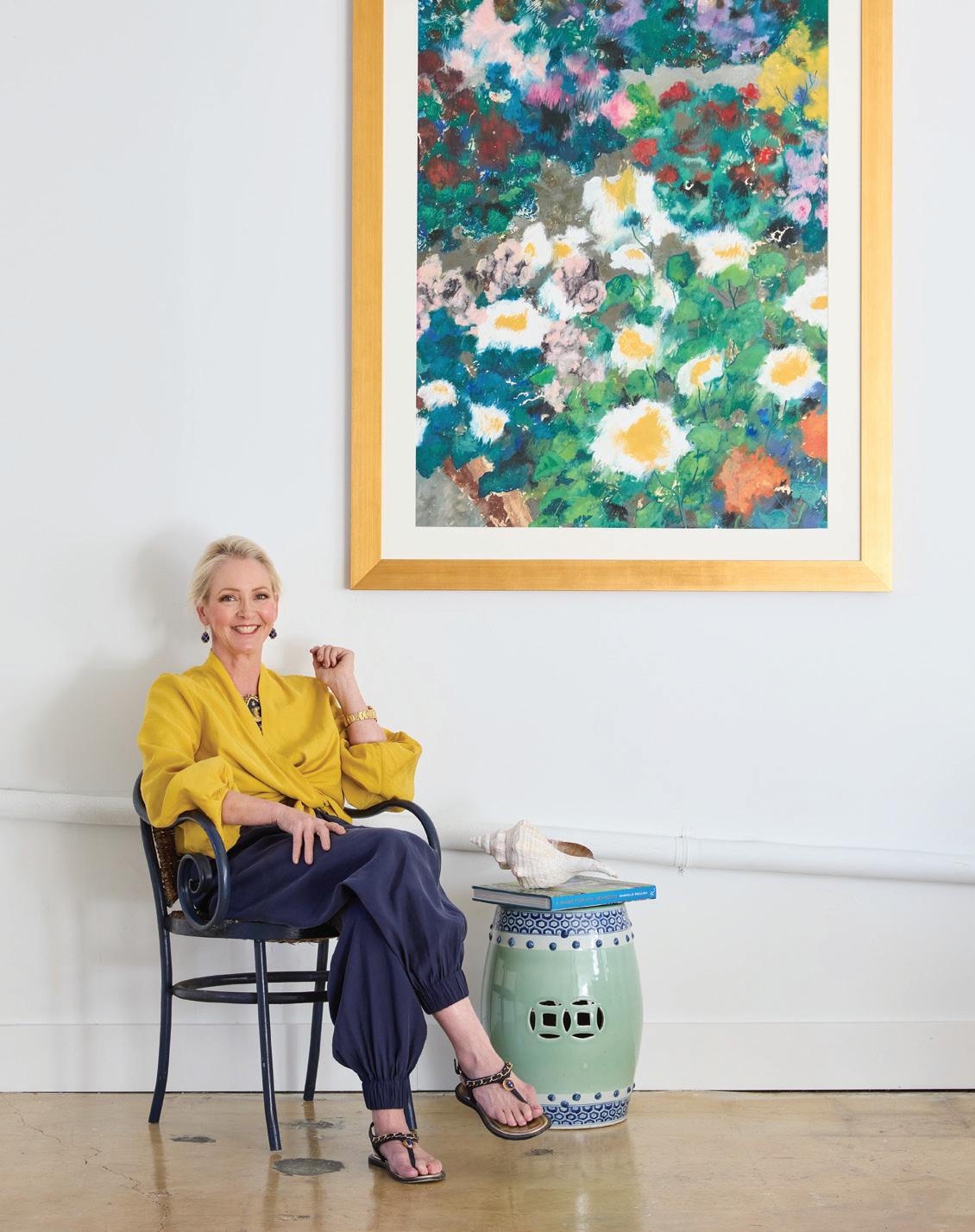



an event-planning business. Inside, the themed scene changes regularly with esoteric props, shimmering trees, glowing candles, and thousands of flowers. Affable Reed McIlvaine, nephew of legendary horticulturist and party planner Renny Reynolds, recounts his start in the business. “I was unhappy in the dot-com world, so someone suggested I try working for my uncle,” says Reed. “My first event was a bat mitzvah at the American Museum of Natural History in New York, then a party on The St. Regis roof, followed by a mega yacht weekend off the coast of Sardinia. No wonder I was hooked.” After trying several Manhattan locations for his business, Reed decided to make the move to West Palm Beach. Today, Renny & Reed is the largest floral and events business in town.
Just minutes away, Fernando Wong is settling into his offices in an Antique Row villa on busy South Dixie Avenue. “We are enjoying the conveniences of West Palm Beach while still maintaining offices in New York and Miami,” says the Panamanian-born architect, interior designer, and landscape architect. In 2001, Fernando lived out his dream of moving to the American South by settling in Miami. There he was hired on a team

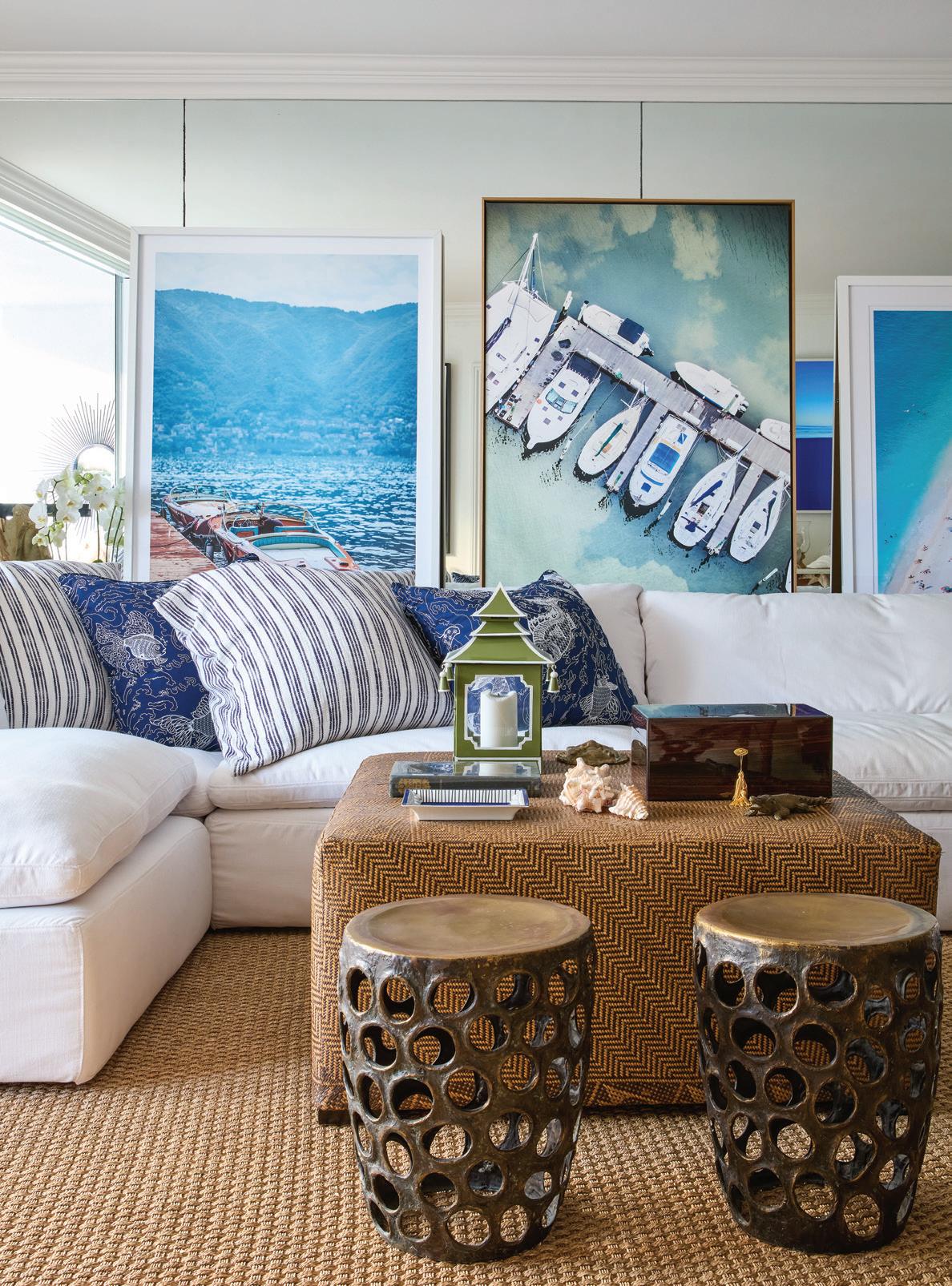





designing and installing gardens at the University of Miami, where he learned the basics of landscape architecture. “The hands-on experience was invaluable,” says Fernando. “I asked everyone, including the guy who moved plants, to give me tips.” Since then, his talent for creating stunning, naturalistic settings has landed projects with great visibility, including a series of Four Seasons Hotels and a number of residences in posh Baker’s Bay in the Bahamas.
Off South Dixie Avenue, floral and events planner Lewis Miller, a California native and New York transplant, is visibly enthusiastic about his move to West Palm Beach thanks to his burgeoning business and his restored Florida home. Lewis achieved celebrity status for his “Flower Flashes,” colossal, outdoor floral installations that he placed in unique locations all over Manhattan. But the designer confesses that after living in the Big Apple for 20 years, he wanted a change. “I signed on for a warehouse in Palm Beach in July and then bought a three-bedroom, Spanish Mission-style house in need of restoration,” he says. “I had Old Florida and Ernest Hemingway in mind during the redo.” And while he has immersed himself in South Florida both personally and professionally, Lewis also continues to work with clients across the globe. “I travel to wherever my existing clients need me, including the Caribbean islands, to organize their galas or weddings,” he says. “We celebrate an abundant, fresh look that is not about stodgy hydrangeas. I especially love the earthy sensuousness of pairing flowers with fruit. Like a
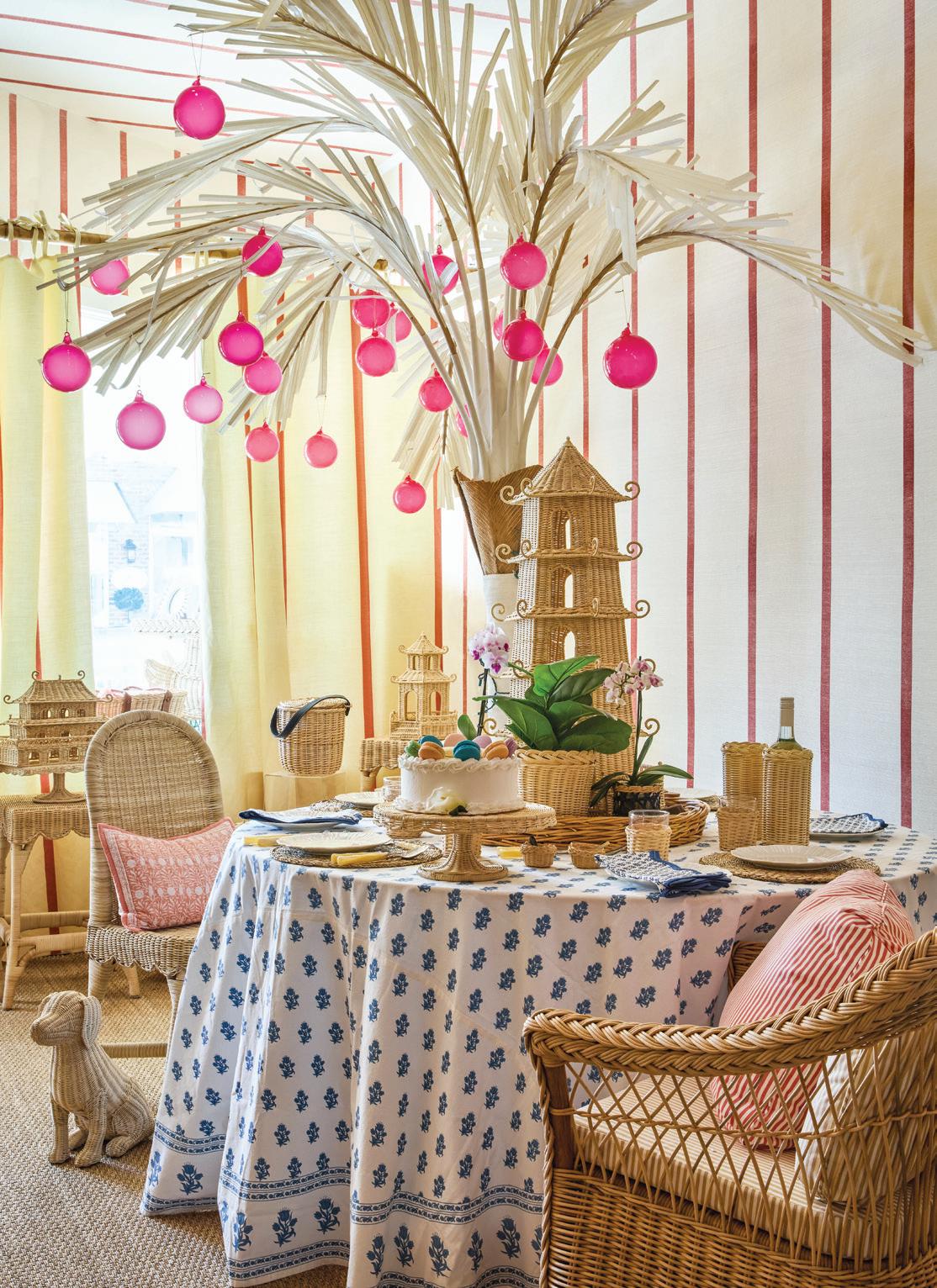



CLOCKWISE FROM TOP LEFT: Mish Tworkowski is pictured in his personal studio that features a Nancy Lorenz mixed media triptych. • Another office is dedicated to kitschy ‘50s and ‘60s “paint by numbers” flamingo images. • Entry pots are abloom with thriving plants. • Signature Mish jewelry includes this stunning pink morganite necklace and a lustrous strand of Burmese, apple green maw sit sit beads. OPPOSITE, CLOCKWISE FROM TOP LEFT: The courtyard of David Phoenix’s office is a favorite space for lunches and receptions. • David is pictured in his tidy antiques and book-filled office. The signed Georgian clock, made by John Warner in Evesham, England, between 1810 and 1821, was a gift from a friend. • David collects model staircases: “I love them. I want to climb those stairs to success, one step at a time.”
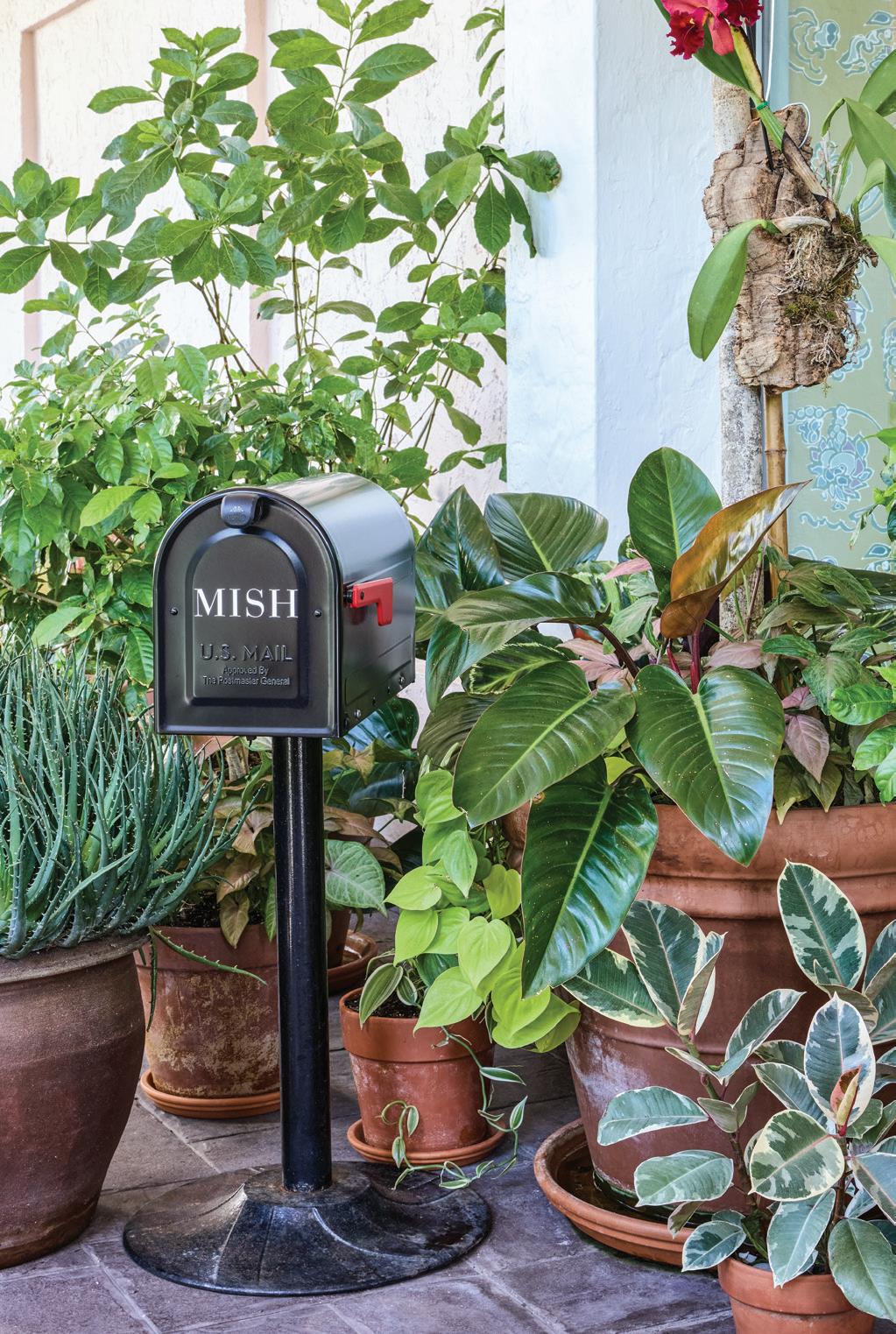

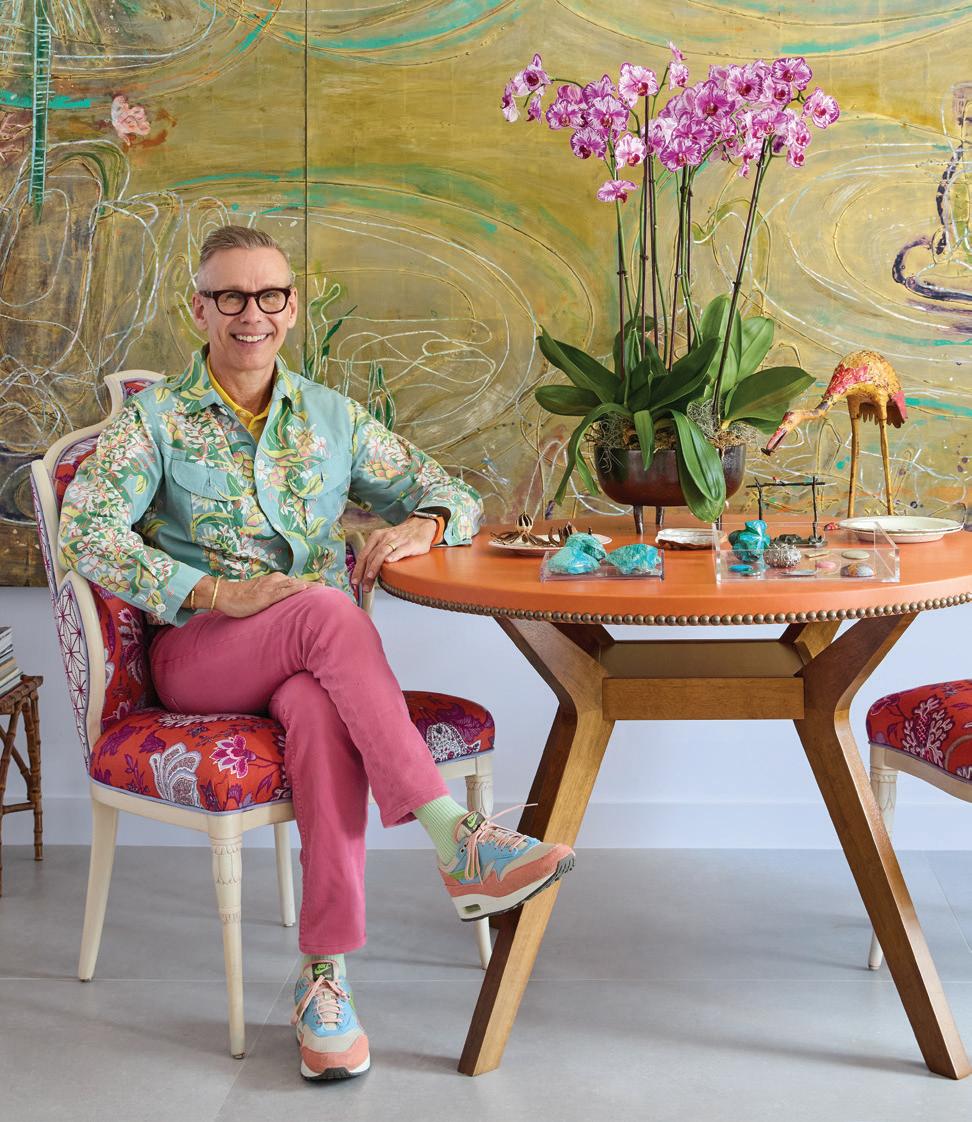

lush Flemish painting, it never looks boring.” Across the bridges to Palm Beach Island, Amanda Lindroth offers a different design sensibility in her shop on South County Road. “I have been living and working in the Bahamas for 30 years, but I decided to open this little shop about eight years ago to become more visible in the U.S.,” she says. “As a result, we now have clients in Nantucket, Sea Island, and many other similar places. I also am overseeing the design of a new 100-room hotel on John’s Island on the Kiawah River in South Carolina.” And the designer’s reach will continue to expand even more as she just acquired the former C Oricco dress shop for her showroom.

Several blocks down South County Road, on historic Phipps Plaza, pale lilac awnings announce the showroom of celebrated jeweler Mish Tworkowski. Almost like a delicious secret, the showroom is tucked in an elegant, landmarked stucco building designed by Addison Mizner. At the entrance, dozens of massive pots hold hopelessly happy plants and trees, while curtains of red bougainvillea shimmy up pale pink walls. Inside, rooms are bathed in the luscious lavender that Mish adores (Benjamin Moore’s “Heather Plum”




paint), a decadent hue he feels is akin to being inside one of his gorgeous gift boxes. “I was born brimming with energy,” the jeweler says with a buoyancy that can’t be copied or learned.
After graduating from Rutgers and the University of London, where he studied art history, Mish landed a dream job at Sotheby’s in London. There he rotated among departments, including 20th-Century Art, Rock & Roll Memorabilia, Jewelry, and Rare Coins. “There are constant ‘eureka’ moments in the auction business, as well as exposure to amazing quality and workmanship,” says Mish. “My work reflects that, including my respect for an unusual variety of materials.” Unique items include everything from petrifiedpalm wood earrings with brown diamonds and lustrous abalone grey pearls to a dazzling, 70-strand diopside necklace.

A block away, David Phoenix radiates satisfaction from a lofty, sunlit studio on Seaview Avenue. Outside, tall cascades of magenta bougainvillea become living columns on white stucco walls, while window boxes of neatly tended geraniums complete the inviting scene.
“I started coming to Palm Beach in 2018 for work, and I always thought I could live here happily someday,” says David. Raised in Uxbridge, Massachusetts, he left his hometown after high school and moved to California, where he landed his first job baking brownies at Disney. After a stint in the sample room at Pierre Deux, David joined Ralph Lauren’s flagship store in Beverly Hills. Along the way, Dinah Shore offered him her own brownie recipe, and Barry Diller offered him some good advice. “He told me, ‘Think big and you’ll be big,’ ” says David. That advice remains at the forefront of every business move the designer makes.
In 2020, David decided to relocate and set up shop on Palm Beach. “I feel lucky to be here,” he says. “The town still has a village feel to it; everything is close by.” In his new space, he continues to design collections for Hickory Chair Furniture Co., something he has been involved with since 2017. Interior projects range from a spacious Montana log cabin to a waterfront family residence at The Abaco Club in the Bahamas, as well as new construction in fabulous Alys Beach and several Park Avenue apartments.

At the western end of Worth Avenue, Casa Branca reflects the je ne sais quoi persona of its owner, Alessandra Branca The respected designer reflects panache and possesses a deep knowledge of antiquities, gleaned from her studies at Oxford University and Lake Forrest College, as well as her expansive travel and a curated upbringing in Rome. “People ask if I sell furniture, but I always explain that no, I sell design,” says Alessandra. “I like to disarm people with beautiful things, but my brand is a separate business from interior design,” she says of the shop brimming with her inspired collections of bespoke cupboards, lacquered cocktail tables, rattan étagères, and porcelain flowers that bring depth to her designs. “If you only follow a recipe, you never create something new or interesting.”
That philosophy is quietly apparent in the chic persona of her shop, as well as in the fabric and wallpaper hues of her brand. “I don’t encourage anyone to come to me with a photograph from a magazine,” Alessandra says. “Doing a house is as personal as painting a portrait. You don’t bring a photo of someone else’s work and ask to copy it. It’s like putting your client’s head on someone else’s body.”
Along Worth Avenue, Ala von Auersperg enjoys living above her tiny clothing shop and its charming, flower-filled courtyard. “I am essentially a painter, but I am acutely aware of the need to design comfortable, versatile attire for women over 40,” she says. “So I do my drawings and paintings, and my partner, Larry Black, puts them on fabric. We create these beautiful pieces that are multifaceted and travel well.” Ala says her customers include women of all ages, even her own daughter.
OPPOSITE, CLOCKWISE FROM TOP: Alessandra Branca welcomes visitors to her charming shop, Casa Branca, next door to The Everglades Club. Outside, vintage iron furniture, covered in her brand’s high-performance fabric, is always surrounded by bowers of seasonal flowers that create an enticing invitation to pause and browse her beguiling shop across the threshold. • Open cupboards and étagères offer ideas for customers to arrange their own decor. • The shop reflects Alessandra’s unique eclecticism of mixing bespoke and vintage.


PAGES 19-22: FLORAL DESIGN: Floral designer: Tattie Rose Studio, tattierosestudio. co.uk
PAGES 25-28: GARDEN: Delaware Botanic Gardens, delawaregardens.org
PAGES 30-32: DECORATE: FLOWERS: Floral designer: Kelly Marie Thompson, Fleur Inc., fleurchicago.com
GREY GARDENS: PAGES 42-55: Designer: Liz Lange, Figue, figue.com
BEAUTY IN BLOOM: PAGES 64-69: Interior designer: Lindsey Herod, Lindsey Herod Interiors, lindseyherod.com; MUSIC ROOM:

Walls: ‘Livable Green’ by Sherwin-Williams, sherwin-williams.com; vintage panels: Gracie from Jessica Lev Antiques, jessicalevantiques. com; curtains: ‘Blake’ in Oregano from Schumacher, schumacher.com; curtain trim: Samuel & Sons, samuelandsons.com; woven polypropylene indoor/outdoor rug: Venetian Blind Carpet One Floor & Home, vbaf.com; MUDROOM TO LAUNDRY: Wallpaper:
‘Raphael’ by Scalamandre, scalamandre.com; trim color: ‘Krypton’ by Sherwin-Williams; porcelain tile: ‘Unity’ by Daltile, daltile.com; PRIMARY VIGNETTE: Tableskirt: ‘Boughton House’ in Porcelain by Schumacher; fringe: ‘Loire’ bullion in Blanc by Samuel & Sons; blue diamond polypropylene indoor/outdoor rug: Venetian Blind Carpet One Floor & Home; DINING ROOM: Wallcovering: Scalamandre; antique crystal Italian chandelier: sourced by Janet Wiebe, sourcedbyjanetwiebe.com; curtain trim: ‘Mireille’ border in Turquoise by Samuel & Sons; dining table: through Lindsey Herod Interiors; vintage gilt mirror: through Lindsey Herod Interiors; chair seats: upholstered in Kravet Performance Velvet, kravet.com; chair backs: upholstered in ‘Montgomery’ silk plaid by Schumacher; early 20th-century Federal style sideboard: from Jessica Lev Antiques; KITCHEN: Custom cabinets with cane panels: through Lindsey Herod Interiors; hanging shade: ‘Windsor’ in Natural Brass by Visual Comfort, visualcomfort.com; shade fabric: through Lindsey Herod Interiors; ceramic tile: ‘Antico’
in White Clay by Daltile; counter stools: Frankel, frankel.com; OPEN LIVING: Sofa:
Performance Woven in Blue by Kravet; sofa trim: Fringe Market, fringemarket.com; club chairs: ‘Petite Frond’ in Celadon by Heather Chadduck, heatherchadducktextiles.com; ottoman: Performance Woven by Kravet; ottoman trim: Fringe Market; geometric polypropylene indoor/outdoor rug: Venetian Blind Carpet One Floor & Home; PRIMARY
BEDROOM: Pelmet and bed skirt: ‘Boughton House’ in Porcelain by Schumacher; fruitwood with inlay commodes: Area, areahouston.com
THE PULL OF PALM BEACH:
PAGES 70-81: Meg Braff, megbraffdesigns. com; Danielle Rollins, danielledrollins. com; Reed McIlvaine, rennyandreed.com; Fernando Wong, fernandowongold.com; Lewis Miller, lewismillerdesign.com; Amanda Lindroth, amandalindroth.com; Mish Tworkowski, mishfinejewelry.com; David Phoenix, davidphoenix.com; Alessandra Branca, branca.com; Ala von Auersperg, alavonauersperg.com
VOLUME 17, ISSUE 3. Flower magazine, ISSN 1941-4714, is a bimonthly publication of Peony Publishing, LLC, located at 3020 Pump House Road, Birmingham, AL 35243. Periodicals postage is paid at Birmingham, AL, and additional mailing offices. Postmaster: Send address changes to Flower magazine, P.O. Box 8538, Big Sandy, TX 75755. For subscription inquiries and customer service, please call 877.400.3074. All unsolicited materials will not be returned. Printed in the U.S.A.
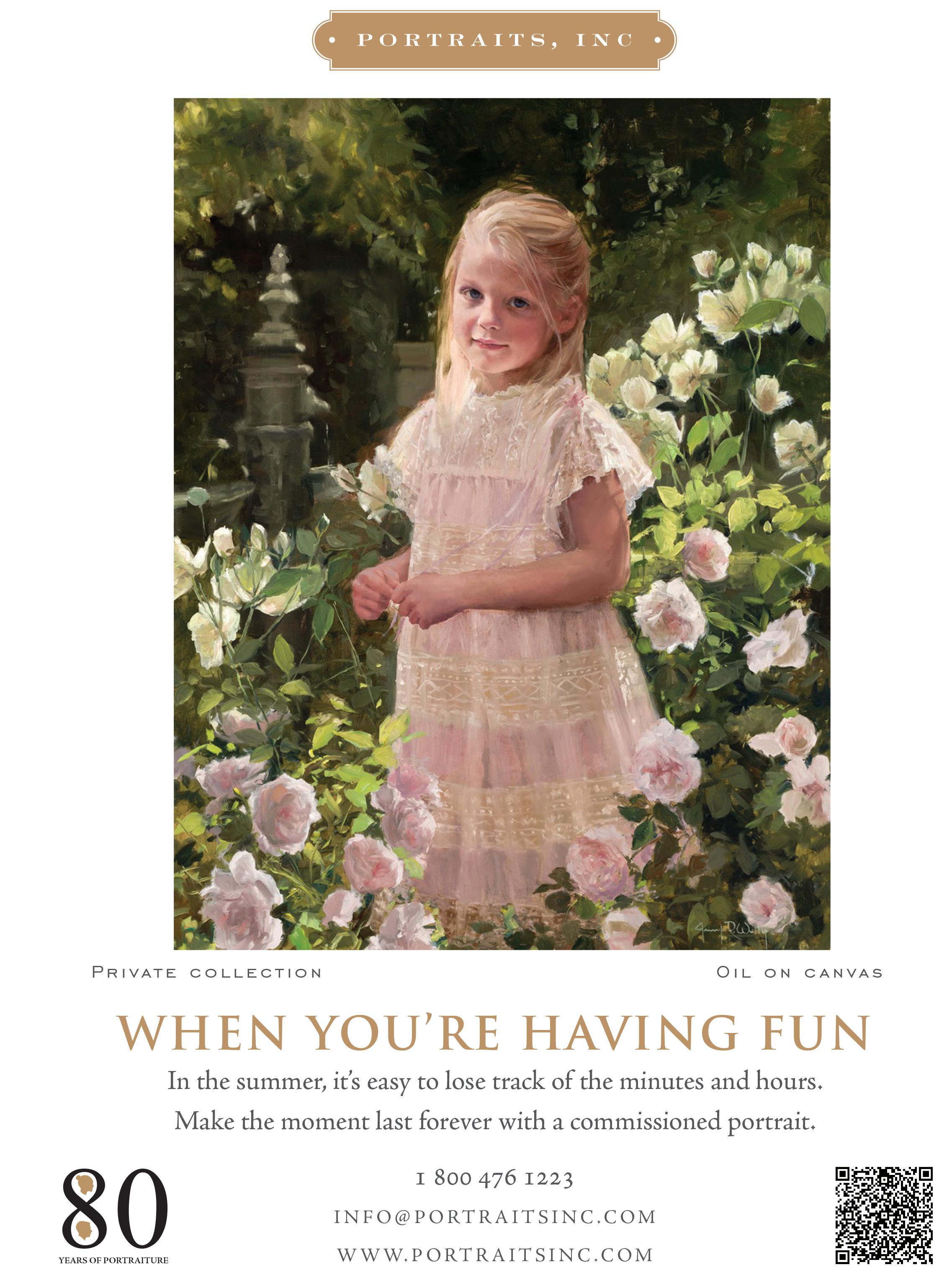





DESIGNER ELAINE GRIFFIN WELCOMES GUESTS WITH A DRAMATIC ALFRESCO SETTING SURE TO BE THE TALK OF THE TABLE.
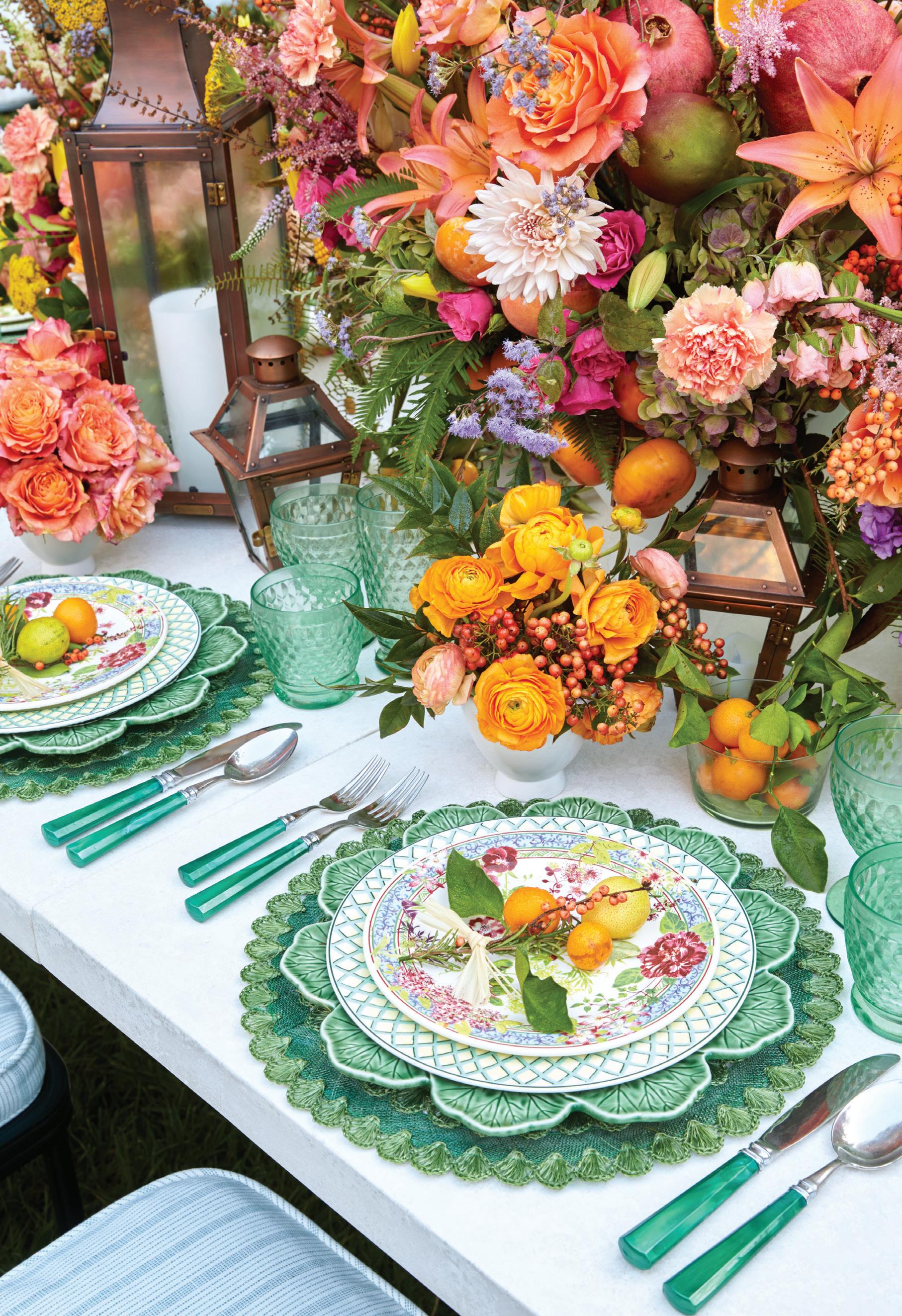
“Springtime in the South is ideal for entertaining outside—endless blue skies, perfect temperatures, and the mosquitoes have yet to arrive,” says designer Elaine Gri n. “Your outdoor style and color palette should be a complementary continuation of your interior spaces, tweaked to acknowledge Mother Nature. Look to hues of a rosy sunrise or coral-kissed sunset for no-fail options.” Elaine adds that for alfresco settings, common sense prevails. “Here, the hobnail glassware is heavy enough to be wind-resistant, the main plates are a weighty ceramic, and the stainless cutlery’s handles are actually plastic!”
Millefleurs dessert plate ($44) by Faiencerie de Gien • Choisy dinner plate ($12) by Villeroy & Boch • Geranium Green platter ($42) by Bordallo Pinheiro • Boston Green highball glass ($16), wine glass ($16), and double old-fashioned glass ($15) by Villeroy & Boch • Novia Pearlized Green stainless flatware ($35 for 5-piece place setting) by Cambridge Silver
All of the above provided through partnership with Replacements, Ltd., 800.737.5223, replacements.com
Governor Pool House Lantern and French Quarter Patio Lantern (inquire for pricing) by Bevolo Gas & Electric Lights; bevelo.com

